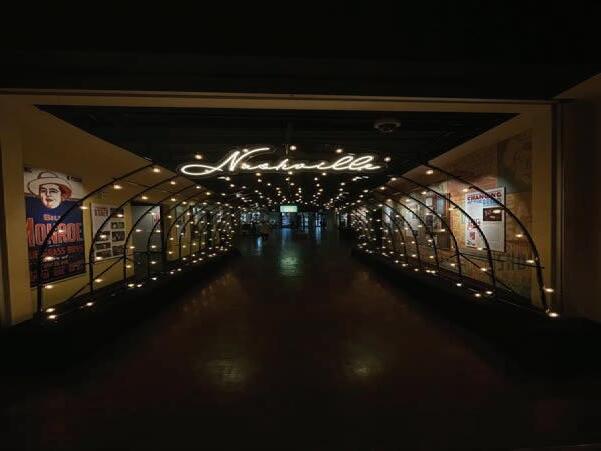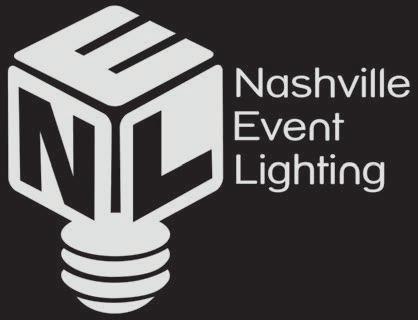POWERING UP
EXAMINING OPPORTUNITIES AND CHALLENGES IN TENNESSEE’S CLEAN ENERGY SECTOR

Cruise Control
How AI could improve tra c, fuel e ciency

Most Powerful Women
Career and life lessons from our panelists



EXAMINING OPPORTUNITIES AND CHALLENGES IN TENNESSEE’S CLEAN ENERGY SECTOR

How AI could improve tra c, fuel e ciency

Career and life lessons from our panelists


For organizations to remain successful, they need to keep up with societal and technological changes, and this pace is accelerating. Most want the ability to do cool things with their data – better reporting, better decisions, better insights, and the ability to use prediction to improve business and innovate.

However, many companies often struggle to find the time to delve into the data and analytics strategy necessary to confidently make data-driven decisions about where their business should go next. The most common issue is sheer overwhelm. Implementing a data and analytics strategy requires engagement across multiple layers of an organization that are not used to communicating. Many organizational cultures simply do not foster an environment conducive to studying, experimenting, and innovating or shared learning.
So, how do you reach the state of shared learning required to truly innovate? The answer lies in creating an environment that offers opportunities to experience something new, understanding its potential for enhancing organizational performance, and committing to changing existing practices. Organizations should also consider if they actively cultivate an environment where challenging the status quo is not only accepted but rewarded.
It is also vital that organizations reframe their definitions of innovation. All companies might not have the potential to create something as revolutionary as the iPhone. However, every organization does hold the capacity for micro-innovations that can enhance operations. For instance, innovation and the road toward continuous improvement could be as simple as the resource savings of replacing a repetitive, manual quality review check with a mathematical model capable of autonomously triggering the next required action.
But where do you start? Keller Schroeder first suggests allocating time for executive alignment and conscious learning, such as their Executive Innovation and Strategic Pause Workshops. During these workshops, attendees from various disciplines (Operations, IT, etc.) evaluate their current state, contemplate a better future state, and discuss the gaps between the two. From there, Keller Schroeder can help them develop a path toward that future state. This includes a data and analytics strategy that ultimately helps the organization foster a culture to learn, innovate, gain competitive advantage, and not get left behind.
To learn more, visit kellerschroeder.com/innovation.
Keller Schroeder is focused on connecting you with the technology strategies, tools, and services to alleviate challenges, achieve goals, and increase productivity. Our comprehensive approach to design, implementation, and support includes applications, data strategy, infrastructure, and staffing solutions.
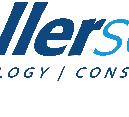
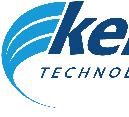


Keller Schroeder
901 Woodland Street, Suite 104 Nashville, TN 37206
WEBSITE kellerschroeder.com

LINKEDIN linkedin.com/company /keller-schroeder/ FOUNDED

1978
PHONE
615.208.7726
EMAIL info@kellerschroeder.com
APPLICATIONS
Custom App Development, Database Platforms, Digital Transformation, Legacy Code Expertise, Project Management, Systems Integration, Websites, Extranets, & Intranets

DATA STRATEGY
Business Intelligence & Dashboards, Data Architecture, Data Governance, Data Science, Lean Process Analysis, Narrow AI, Predictive Analytics, Strategy Execution Services
INFRASTRUCTURE
Cybersecurity, Cloud Technologies, Collaboration, Data Center, Disaster Recovery & Business Continuity, Network, Virtualization
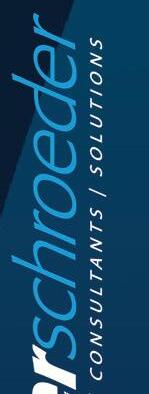



STAFFING
Contractor & Full-Time Placement, Contract-to-Hire, Payrolling, and Recruitment & Selection

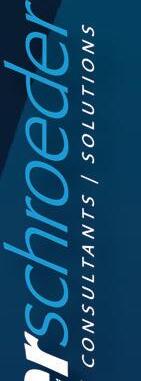
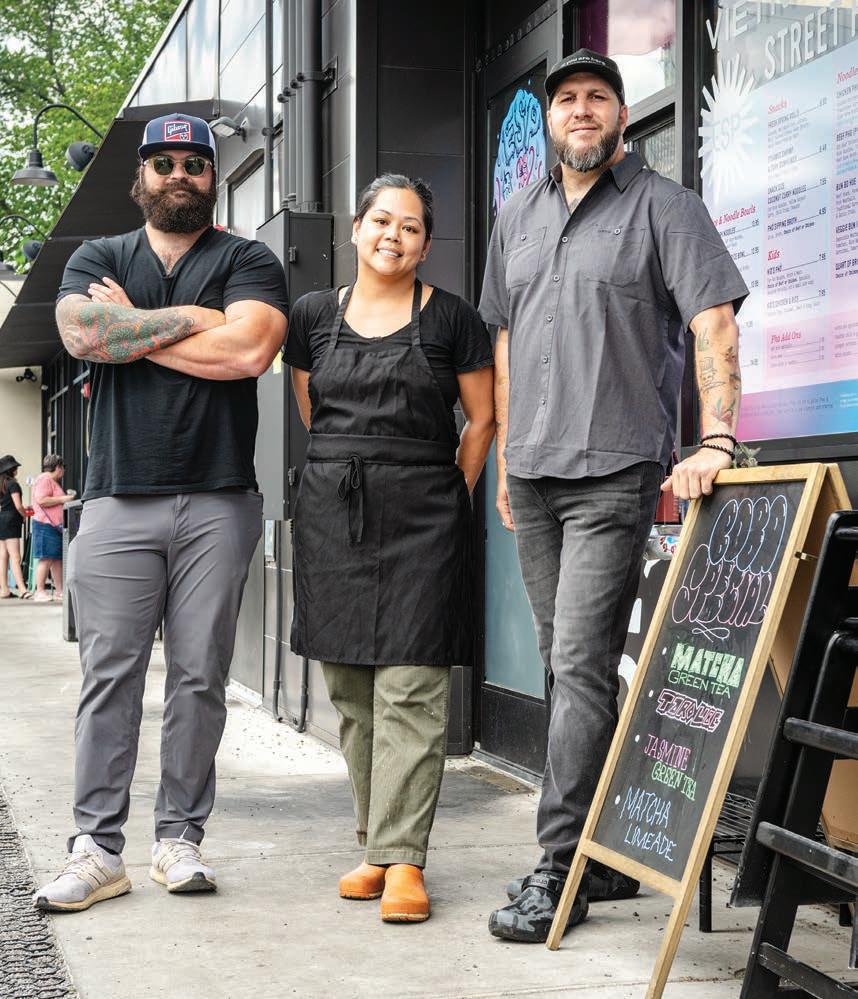
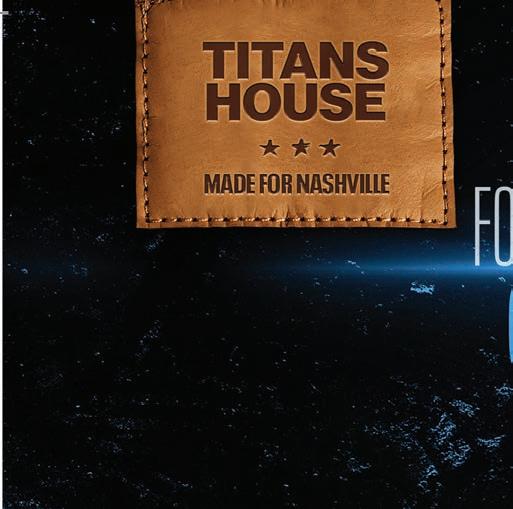

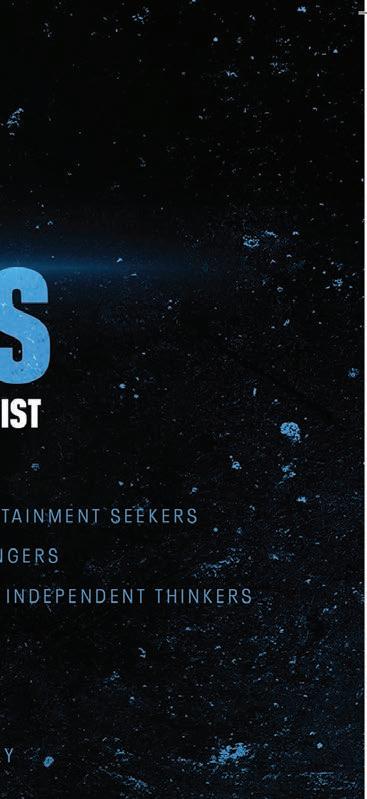







This is a new one for us: a magazine issue focused solely on innovation in all its forms. Well, sort of.
Ten years ago this summer, the Post published an Innovators magazine. Here’s what then-publisher Tori Hughes wrote in her intro letter: “Innovation, as a concept, is so dynamic that it is hard to describe.” Now, I guess, we will seek to describe it.

That issue, like this one, included stories about the automotive and health care sectors. It included excerpts from a conversation with then-Nissan CEO Carlos Ghosn, who later led authorities on an international manhunt. It featured companies that, a decade on, no longer exist.
But that issue shared with this one a broad definition of innovation. These stories are not just about scientists in labs or buzzy startups in the tech sector. Innovation can be found in leadership styles, management principles, the way we borrow money and even how our food is prepared and sold.
Thanks for coming on this journey with us. And don’t miss the latest iteration of Most Powerful Women on Page 33
Stephen Elliott, Editor selliott@fwpublishing.comeditorial EDITOR
Stephen Elliott
MANAGING EDITOR
William Williams
STAFF WRITERS
John Glennon, Hannah Herner, Nicolle S. Praino
CONTRIBUTING WRITERS
Chris Chamberlain, Kelsey Beyeler
art & production
ART DIRECTOR
Mary Louise Meadors
STAFF PHOTOGRAPHERS
Angelina Castillo, Eric England
GRAPHIC DESIGNERS
Sandi Harrison, Tracey Starck
PRODUCTION COORDINATOR
Christie Passarello
publishing
PUBLISHER
Heather Cantrell Mullins
SENIOR ADVERTISING SOLUTIONS
MANAGERS
Jennifer Trsinar Jezewski, Michael Jezewski, Carla Mathis, Niki Tyree, Keith Wright
ADVERTISING SOLUTIONS MANAGERS
Teresa Birdsong, Maddy Fraiche, Allie Muirhead
SALES OPERATIONS MANAGER
Chelon Hill Hasty
ADVERTISING SOLUTIONS ASSOCIATES
Audry Houle, Jack Stejskal
ASSOCIATE ACCOUNT EXECUTIVE

Kailey Idziak
events
MAJOR EVENTS DIRECTOR
Olivia Moye Britton
MARKETING DIRECTOR
Robin Fomusa
SALES AND EVENTS SPECIALIST
Alissa Wetzel
circulation
CIRCULATION AND SUBSCRIPTION DIRECTOR
Gary Minnis
business
PRESIDENT
Mike Smith
CHIEF FINANCIAL OFFICER
Todd Patton
CREATIVE DIRECTOR
Elizabeth Jones
IT DIRECTOR
John Schae er
SPECIAL PROJECTS COORDINATOR
Susan Torregrossa
FW Publishing, LLC
OWNER
Bill Freeman
210 12th Ave. S., Suite 100 Nashville, TN 37203 nashvillepost.com
Nashville Post is published by FW Publishing, LLC. Advertising deadline for the next issue is September 27. For advertising information, call Heather Cantrell Mullins at 615-844-9252. For subscription information, call 615-844-9307. Copyright © 2023 FW Publishing, LLC.
September1, 2023
In collaboration with our media partner, FW Publishing, I invite you to enjoy this complimentary issue of Nashville Post Magazine. We areexcited to offer this great benefit to youas a valued chamber member.
Thank you for your continued investment in the Nashville Area Chamber and your ongoing support of our mission, to create economic prosperity by facilitating community leadership.
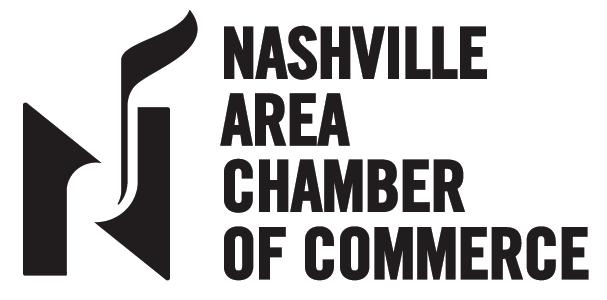
Warm regards,
 Ralph Schulz President and CEO Nashville Area Chamber of Commerce
Ralph Schulz President and CEO Nashville Area Chamber of Commerce
From expansion to reducing the risk of fraud, we know your business requires custom solutions to meet the moments you’re navigating. Fifth Third has industry experts who understand your challenges, and the tools to make your business more efficient.

hen Shanice Cheatham’s father fell ill from an infection caused by an error in hospital protocol, she changed her career path. e Meharry Medical College presidential fellow moved from an orthopedic surgery track toward health policy and management, and she set out to prevent similar hospital infections globally.
With help from the newly formed MeharryHeritage Fellowship, Cheatham is spending the next year growing her company, Endemic Solutions, before returning to medical school. Her rst product is the Endemic Filtration Portable Handwashing System, a backpack that puri es water and provides a wound-healing solution so that doctors who do not have access to clean water can wash their hands, clean wounds and prevent infections.
ough Cheatham started her company seven years ago while she was a master’s degree student at Kent State University, the Ohio native says she struggled to gain traction. COVID brought increased focus to infection, and
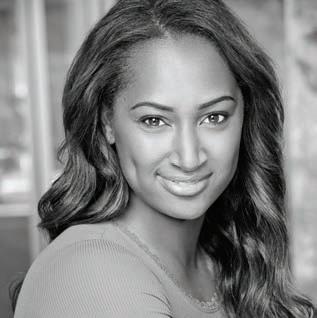
she later caught the eye of infectious disease expert and Meharry President and CEO Dr. James Hildreth, who reached out to her for a presidential fellowship interview.
“When COVID hit, my phone was ringing o the hook, because an infection that became a pandemic hit people so hard that they realized the need that I was trying to capture that had been existing in so many other countries,” she says.
She also found support in missionary medicine circles. “ ey would heal them from whatever ailment that they had, but then they would die from an infection,” Cheatham says.
Cheatham recently received her second backpack prototype and some grant funding to help the business grow. She hopes to eventually hire a CEO and transition to a chief medical o cer position. Her plan is to continue on to medical school to become a trauma surgeon and build global health surgery centers — some in the U.S. centered on immigrants and others abroad.
“I think it’s important for more innovators to be out there, no matter how wonky the idea may be,” Cheatham says. “Mine started as a simple backpack idea but it turned into this life-changing thing for a lot of people. You never know what your crazy idea turns into for someone else.”


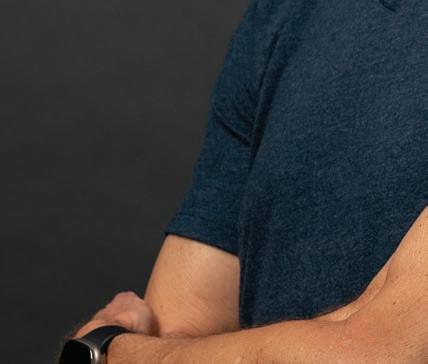
Former Tech Council leader wants to talk about innovation


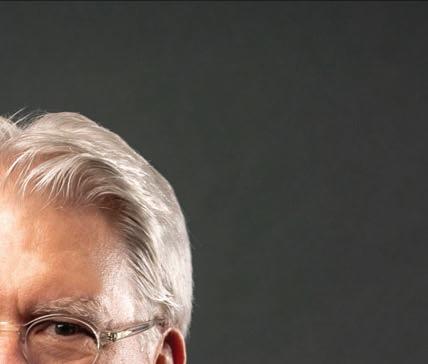

Brian Moyer has not stayed idle since stepping down as head of the Greater Nashville Technology Council last year. In March, he celebrated the launch of Innovate Nashville, a co ee table book from Global Village Publishing that highlights the city’s innovators. He served as “project champion” for the book, connecting the publishers and writers with his vast network in the Nashville tech community. Then in June, Moyer and several partners announced the launch of The Innovation Studio, a Franklinbased venture studio with the goal of building three new industrial AI startups every year. We spoke to him about his latest projects.





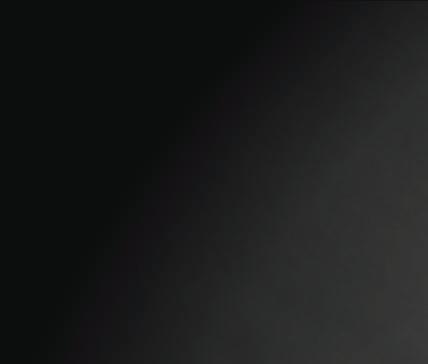
Compared to an incubator that starts with an entrepreneur or an accelerator that starts with a company, a studio starts with an idea or a problem that needs to be solved. The secret sauce is you take that idea through a very detailed, repeatable process to make sure it has all that’s

required to turn it into a successful, scalable, investable company. We think that’s going to take about three months. You start with an idea: What’s the problem that you’re trying to solve? What’s the market that you’re going after? Who’s your first customer? What’s your business plan? Can we prove out product market fit? Can we develop a minimal viable version of this product to prove out the concept? Only if the idea makes it through all of that do we actually launch the company. The studio will be first money in, so we’ll invest into that company. Then we’ll hire the CEO to run that company in partnership with the studio. We’ll be co-founders, the studio and the CEO, in the new company, and then stick with it until an eventual exit. We plan to start the evaluation process for one idea each month. Out of 12 ideas in a year, we think three of those will turn into companies. Over a four-year period that’s 12 new companies that we plan to launch, all related to applied AI, solving big problems.
What makes Nashville an interesting enough market to publish a book about it?
There are a lot of cities around the United States that are known for innovation and known for tech. What makes Nashville unique is the creative community that exists here. It’s been around for over 100 years. It’s very entrepreneurial. It’s creative, not only in terms of musicians but also songwriters, fashion … there’s all this creative juice going on in town. As people are looking at Nashville, it’s still small enough where you can come here and make a di erence, as opposed to a New York or a San Francisco or a Chicago. Whether you’re a software developer or some other kind of techie or an entrepreneur or creative type, the community you can get plugged into here will make you better at whatever it is you’re doing.
615.259.0848

A successful event starts with sensational food. We’ll plan a menu to help you savor every moment.


The holidays are right around the corner and no matter what kind of gathering you’re hosting, we have you covered with a dreamy holiday menu.

Is there more to Nashville’s entrepreneurial ecosystem than health care?
Yes. Today. That wasn’t always the case. It’s pretty amazing to look at all of the venture capital representatives that have ended up moving to Nashville over the past few years. There’s old Nashville money, there’s new Nashville money, there’s East Coast money, and there’s West Coast money that’s all kind of converged. There are a number of di erent organizations trying to pull that together so it’s easier to meet people. I know people in the venture world who moved here because they love the quality of life and this is where they wanted to raise their families. Once they got here, they realized that there are actually companies right here they could invest in that they weren’t necessarily aware of. The innovation that’s taking place is attracting some people, but I think it’s the quality of life, the taxation. Even though the cost of living has increased from what it was, compared to the East Coast or the West Coast, it’s still very a ordable.
Get
Our breakfast, coffee bars, and boxed lunches provide sustenance for successful brainstorm sessions and powerful ideas.


 BY HANNAH HERNER T
BY HANNAH HERNER T


ruck drivers are more likely to have poor health than people in other professions, and because of the transience of their work, they often aren’t able to access a primary care provider on the road.
Interstate Health seeks to give drivers and the surrounding rural areas they pass through access to preventative care. e Brentwood-based company launched in late 2022 with a plan to expand quickly. It aims to build or acquire (focusing on the former) 60 clinics over the next year and a half, and 300 clinics near truck stops and travel centers within the next six years.
In March, the organization opened its rst two clinics: an acquired occupational health center in Cookeville, Tenn., and a new build in Port Wentworth, Ga.

e Cookeville location will serve as clinical headquarters. Interstate Health is taking over an existing clinic that has a history serving Averitt Express, a freight transportation company headquartered there.
Commercial drivers su er a higher rate of sleep apnea, diabetes, high blood pressure and heart disease than the general population.



eir lifespan is just 61 years, compared to an average of around 78 years for the general population. National surveys show that truck drivers are twice as likely to smoke compared to other U.S. workers.


Because many are independent owner-operators, they also tend to go without health insurance, Interstate Health co-founder and CEO Je Seraphine notes.
Another issue is simple accessibility. If a driver isn’t feeling well, there often isn’t a hospital on the rural routes to serve them. At an emergency room, they could incur higher outof-network fees. Most wait until the route is over, delaying care. Seraphine says Interstate will strive to be a more a ordable alternative.
“ e reality is right now, continuity of care for this population and accessibility of care just doesn’t exist,” he says. “Once they get into the cab of that truck, they know that their options are limited to receive health care.”
Interstate Health also seeks to do something that typical hospitals have struggled to accomplish — sharing health data across locations. at way, drivers can receive seamless care at various locations across the country.

“We don’t want to just do a physical for a driver and then leave them out on the road,” Seraphine says. “We want to really work to meet the primary care needs and ongoing needs for those drivers as much as we can.”
Seraphine, who has a background in rural and community health care, says one of the main reasons similar clinics haven’t worked in the past is because it can be hard to be nancially viable serving only commercial drivers. Allowing community members to also use the clinics helps keep the clinics a oat while serving drivers, as the company originally intended. Interstate Health clinics o er services including pre-employment physicals and drug screens, as well as walk-in primary and urgent care and pharmaceutical services.
“We’re looking for those communities where we can make a di erence in the community and also make a di erence for the drivers,” Seraphine says.
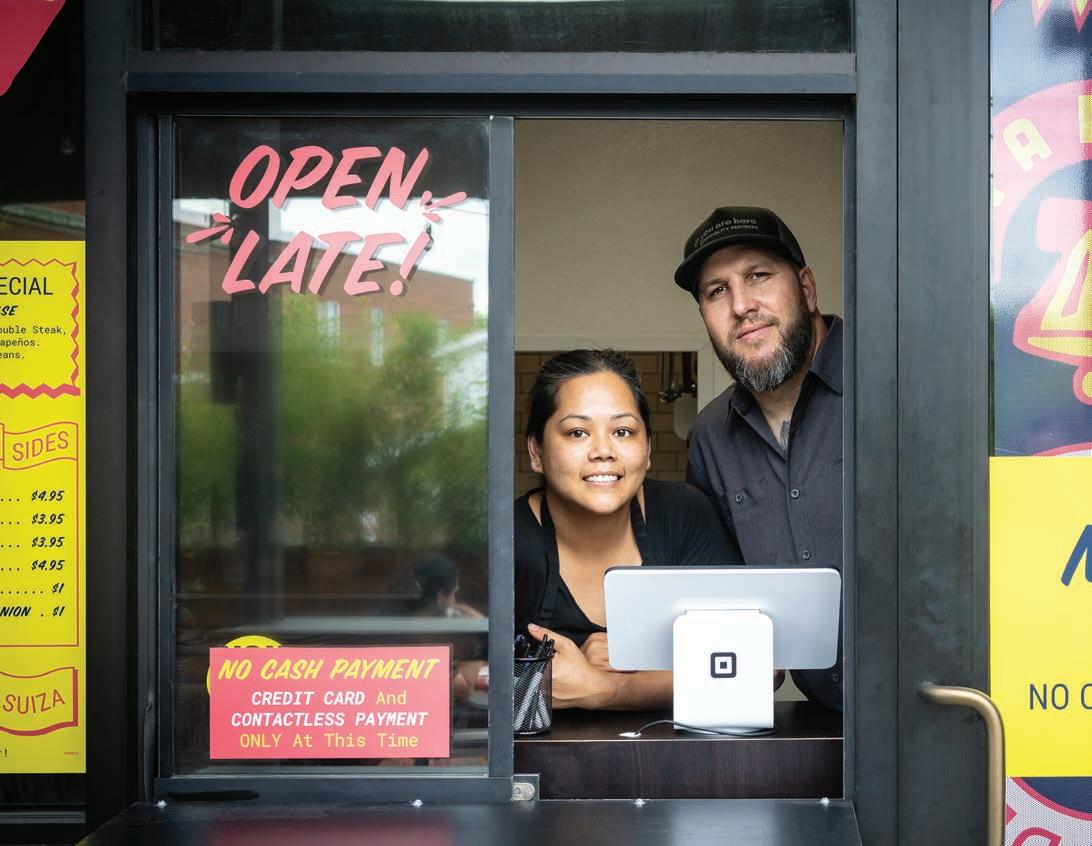 BY CHRIS CHAMBERLAIN
BY CHRIS CHAMBERLAIN
icro-kitchens — also known as virtual restaurants, ghost kitchens or cloud kitchens — have been a part of the restaurant industry in one form or another for more than a decade. Born out of the increasing demand for food delivery by services like Uber Eats, the idea of operating a separate delivery-only concept within an existing restaurant’s kitchen blew up during the lockdown period early in the COVID pandemic. Full-service restaurants began to o er pizzas, burgers, tacos and other specialty items, essentially represented as standalone restaurants on the delivery apps, only without physical addresses or serving sta .
An example of a successful virtual restau-
rant operation is Soul at 6317 Charlotte Ave. Walking up to the location, it appears like a large, bustling Mexican restaurant and bar, but a small sign on the front door reveals that the operation supplements its income by preparing food and serving as the Uber Eats pickup location for not only its own menu but also virtual operations named Buddy’s Pizza, Soul Wings, Factory Hotdog and Nashville Burgers.
Another popular model is the cloud kitchen, a setup where multiple concepts share a commissary kitchen space to prepare their own menu for delivery or carryout from a central hub, sta ed by employees of the host kitchen. Midtown Foods is located in a nondescript industrial building at 614 18th Ave. N. near Watkins Park. Inside those green cinder block walls, more than 10 di erent operations cook Ethiopian injera, birria tacos, hot wings, barbecued ribs and pho in separate kitchen stalls. Delivery services or individual diners can walk into the small lobby and enter their order into a kiosk which will instruct them which door in a bay of lockers contains
their carryout order.
Midtown Foods is a project of CloudKitchens, a California-based company that counts Uber co-founder Travis Kalanick among key early investors. e company’s model revolves around o ering food entrepreneurs the chance to open a restaurant without the burdens of traditional brickand-mortar, suggesting a break-even opportunity of six months versus ve years under the traditional model. CloudKitchens makes this claim based on needing only around 10 percent of the space and employees to launch and operate as a virtual restaurant and just a fraction of the initial capital investment: $30,000 as opposed to $1 million.
In East Nashville, local developer Tyler Cauble saw the trend of micro kitchens and put his own spin on the concept with e Wash, a collection of ve restaurants and a bar located inside the six stalls of a retro tted former car wash at 1101 McKennie Ave. Cauble says that the parcel was originally considered for use as an Airbnb or as a retail and o ce project until he ran into a snag.


“We discovered we had to keep the original facade or Metro was going to take 20 feet of right-ofway, which would have cut the parcel in half,” he explains.
“We discovered we had to keep the original facade or Metro was going to take 20 feet of right-ofway, which would have cut the parcel in half,” he explains.
Nguyen and Newton wanted to expand their single location into a restaurant group, and e Wash provided an easier avenue to growth.
Nguyen and Newton wanted to expand their single location into a restaurant group, and e Wash provided an easier avenue to growth.
 Candice Lee Vice Chancellor, Athletics and University A airs Athletics Director, Vanderbilt University
Candice Lee Vice Chancellor, Athletics and University A airs Athletics Director, Vanderbilt University

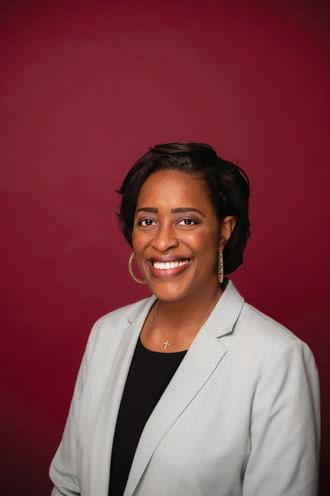 Jennifer Turner President & CEO, Tennessee Performing Arts Center
Jennifer Turner President & CEO, Tennessee Performing Arts Center
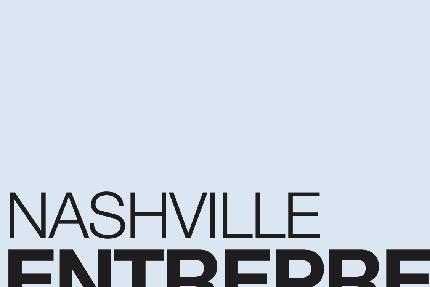
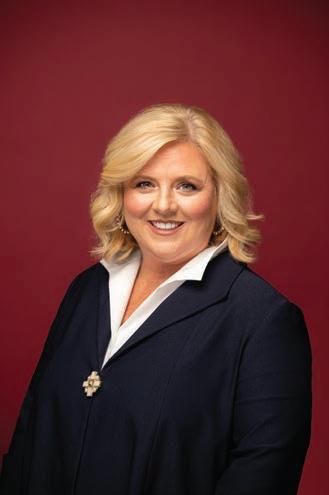
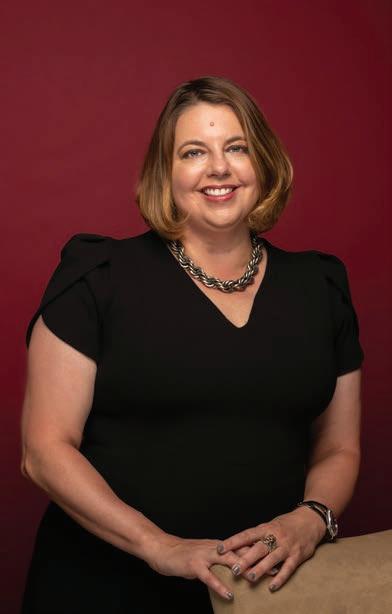
Cauble pivoted to a new concept: “I kept getting calls asking for restaurant delivery options, so we came up with an idea for retail-facing ghost kitchens that would focus on takeout and delivery. I wasn’t looking to invent something new, but I couldn’t nd anything similar to it. Now people are calling me from all over wanting to replicate it,” he shares proudly.
Cauble pivoted to a new concept: “I kept getting calls asking for restaurant delivery options, so we came up with an idea for retail-facing ghost kitchens that would focus on takeout and delivery. I wasn’t looking to invent something new, but I couldn’t nd anything similar to it. Now people are calling me from all over wanting to replicate it,” he shares proudly.
Each tenant is provided with a grill hood, a three-compartment sink, a grease trap and a walk-in cooler, and then chooses their own kitchen equipment package to get started for an initial investment of around $30,000. Occupants sign a yearly lease with no royalty provisions and in return share amenities such as an outdoor patio dining area with a replace, landscaping and a high-visibility location along Gallatin Pike.
Newton explains: “We wanted to have di erent brands and try new things out. We saw Tyler’s vision and thought it was brilliant. We’d already planned to open a little pho shop, so we checked out the economics and only had to budget $50,000 to $75,000 to get into a new concept.”
Newton explains: “We wanted to have di erent brands and try new things out. We saw Tyler’s vision and thought it was brilliant. We’d already planned to open a little pho shop, so we checked out the economics and only had to budget $50,000 to $75,000 to get into a new concept.”
ey have been so pleased with the results of their rst year at e Wash that the couple jumped to occupy two new stall openings. One houses their new quesadillabased concept, Sweeza, and the other is a venture from East Side Banh Mi executive chef Chris Biard and his wife Emma. e couple named their business SS Gai after the ai name for the grilled and fried chicken dishes that highlight their menu.
Each tenant is provided with a grill hood, a three-compartment sink, a grease trap and a walk-in cooler, and then chooses their own kitchen equipment package to get started for an initial investment of around $30,000. Occupants sign a yearly lease with no royalty provisions and in return share amenities such as an outdoor patio dining area with a replace, landscaping and a high-visibility location along Gallatin Pike.
“Within two weeks of announcing the concept, we had all six leases committed and a waiting list of more than 40 restaurants wanting to get in,” recalls Cauble. “We were very selective of who we put in here, and we haven’t encountered the typical issues that new restaurants face.”
“Within two weeks of announcing the concept, we had all six leases committed and a waiting list of more than 40 restaurants wanting to get in,” recalls Cauble. “We were very selective of who we put in here, and we haven’t encountered the typical issues that new restaurants face.”
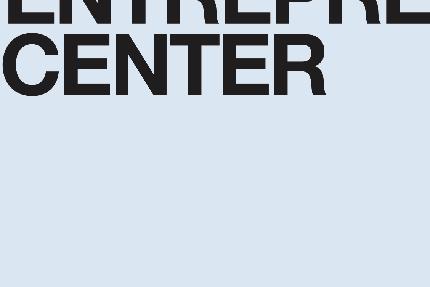
Among the restaurateurs that Cauble chose were Gracie Nguyen and Chad Newton, whom he had worked with when they started up their popular East Side Banh Mi restaurant three blocks away in 2020.
ey have been so pleased with the results of their rst year at e Wash that the couple jumped to occupy two new stall openings. One houses their new quesadillabased concept, Sweeza, and the other is a venture from East Side Banh Mi executive chef Chris Biard and his wife Emma. e couple named their business SS Gai after the ai name for the grilled and fried chicken dishes that highlight their menu.
While the Biards own the concept, Nguyen and Newton serve as consultants under their You Are Here Hospitality umbrella.
While the Biards own the concept, Nguyen and Newton serve as consultants under their You Are Here Hospitality umbrella.
“We see it as a way to grow our restaurant group while still being able to give back to our friends,” Newton says. “ ere are other ways to grow, and some people might see this as playing ‘small ball,’ but we see the advantages of a lot of synergies in the restaurant group and with the other tenants at e Wash. We’re planning on getting big by being small.”
Among the restaurateurs that Cauble chose were Gracie Nguyen and Chad Newton, whom he had worked with when they started up their popular East Side Banh Mi restaurant three blocks away in 2020.
“I already knew they were great people, awesome operators with wonderful concepts, and they cook the hell out of food,” Cauble says.
“I already knew they were great people, awesome operators with wonderful concepts, and they cook the hell out of food,” Cauble says.

“We see it as a way to grow our restaurant group while still being able to give back to our friends,” Newton says. “ ere are other ways to grow, and some people might see this as playing ‘small ball,’ but we see the advantages of a lot of synergies in the restaurant group and with the other tenants at e Wash. We’re planning on getting big by being small.”
Cauble shares an even simpler future plan: “We’ve got our own blue ocean here to do whatever we want. is allows us to help smaller businesses and do something cool for the neighborhood. I’m not going to retire on this, but I’m happy to bring more food options to the east side, the best side for food!”
Cauble shares an even simpler future plan: “We’ve got our own blue ocean here to do whatever we want. is allows us to help smaller businesses and do something cool for the neighborhood. I’m not going to retire on this, but I’m happy to bring more food options to the east side, the best side for food!”
cientists know more about genetics than ever before, and with testing companies like 23andMe, consumers can have genetic information in their hands. However, the genetic analysis o ered by two area organizations goes far beyond mail-in spit samples to inform disease risk, treatment and medication management.
e Genospace program at Nashville’s Sarah Cannon Research Institute uses a blood, urine, saliva or biopsy sample to analyze up to 22,000 genes. A software platform compiles the data and can help oncologists detect cancer in non-symptomatic patients while determining the prognosis of the disease and which therapy, including clinical trial options, would be most e ective.
Andrew McKenzie, scienti c director of Genospace and president of personalized medicine for SCRI, says it was important to make the Genospace technology user-friendly for time-strapped oncologists.
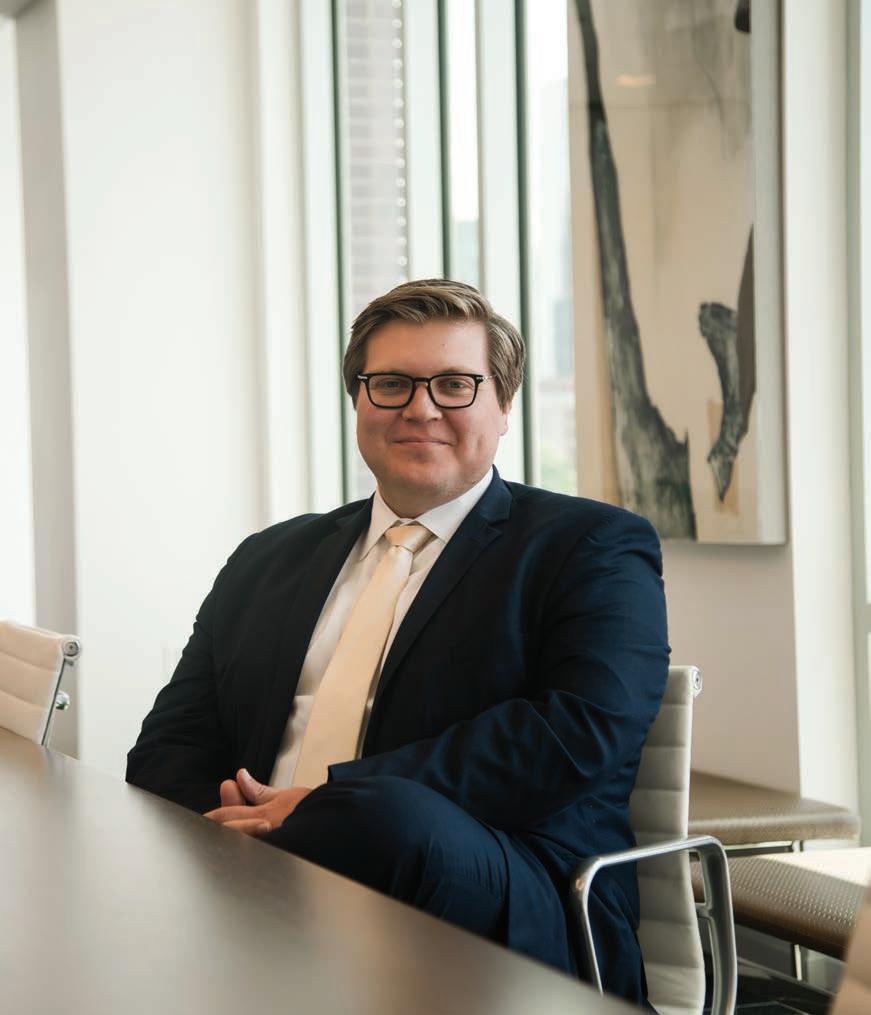
“ e purpose of the software tools and the services that the personalized medicine team provides is to demystify these results when they come back because they are incredibly complex,” McKenzie says.
Another local e ort, Nashville-based company Genomind, is aimed at simplifying treatment decisions for clinicians in an e ort to take some of the “trial and error” out of medication management. e technology looks at 26 genes that factor into drug metabolism, tolerability and e cacy to list patient compatibility with 1,000 medications. Genomind’s services focus on primary care specialities and medications for pain, behavioral health and chronic conditions.
Bill Brown became the CEO of Genomind in early 2023 and was tasked with growing the 11-year-old company.
“We need to get this down to where a doc-
tor can adjust our results, decide what changes to make on medications and pass that on to sta to get enacted in less than ve minutes,” Brown says. “ at’s our goal with every doctor we work with.”
Genomind also tracks drug-to-drug interactions. Knowing when a drug cancels out the e ect of another can help consolidate the total number of drugs a person is taking, Brown says. e technology can also prevent overprescribing and addiction, he adds.
“You’ve got this interactive database that gives a doctor feedback based on this patient’s unique genetic makeup and these speci c genes that interact with your medications,” Brown says. “[ e database says] here’s what medications work and what don’t work for that patient. We’re giving more speci c feedback so they know which med to prescribe
and dosage so they don’t prescribe too high of a dosage if they don’t need to.”
SCRI’s McKenzie says the next frontier in genetic testing for Genospace is predicting whether cancer will recur based on molecular tests. Some recent innovations can predict if a tumor is no longer responding to therapy. It could spare people from unnecessary cost and side e ects of continuing a therapy that is not e ective, he says.
Scientists have learned a great deal more about genes’ involvement in cancer in the past decade, McKenzie says.
“ e sequencing tools and associated bioinformatics are getting better and better and they’re getting cheaper and cheaper, which only means that more patients can get access to this type of testing and these types of services,” McKenzie says.
r. Laura Williams, a gynecological oncology surgeon at Sarah Cannon Cancer Institute, wanted to be the rst. At a conference in 2016, she learned about the European model of surgical recovery, whose goal is getting patients on their feet faster after procedures, and immediately got to work implementing a version at the cancer center.
“I came back from the meeting and it was obvious this was going to be a national move,” she says. “I wanted us to be rst. And I wanted us to design our own program from the ground up with 30 or so stakeholders, anesthesia surgeons, everybody, so we can be the rst in the area to design what we wanted to do, rather than to have somebody tell us what to do.”
A multidisciplinary team developed TriStar Centennial’s Enhanced Surgical Recovery program in 2016 and launched it in Williams’ department in 2017. It has since expanded throughout the Nashville health system and to 167 HCA locations nationally.
According to data from HCA, the program produces a two-day average reduction in length of hospital stays as well as an overall decrease in opioid usage. It also lowered readmission rates — by 54 percent in 30-day readmissions for joint replacements and 45 percent in 90-day readmissions for gynecological surgery.
By now, it is “a well-worn path on our service,” Williams says.
Enhanced Surgical Recovery starts with patient education. Williams gave patient Sherrie Robertson a booklet outlining the tenets of the program before her hysterectomy earlier this year.
Unlike with traditional methods of surgery preparation, patients are allowed to drink water before surgery and are given a carbohydrate drink. is helps with post-surgery nausea. Doctors rarely use intravenous narcotics in surgeries anymore, eliminating withdrawal risks.
“After the surgery, I woke up really quickly. So that told me that the anesthesiologist did a really good job because you don’t want to be out of it that long,” Robertson says. “I got into my room and within hours I was up walking. at’s one of the things they want you to do with the ESR: e quicker you can get up and start being mobile, the better your healing will be.”
Patients can eat and drink co ee right away to avoid ca eine withdrawal headaches postsurgery, Williams says. e program uses multimodal pain management post-surgery to cut down on the post-op use of narcotics, including nonsteroidal anti-in ammatory drugs like ibuprofen and neurologic modiers to calm nerve pain.
To further speed her recovery, Robertson took on a low-in ammation diet as recommended by the booklet. Robertson took about six opioids over the two-day period after the surgery to be able to sleep. She has a history with pain medicine from previous back surgeries and associated chronic pain.
“I did not want to get home and get addicted to opioids, which is really easy to do,” Robertson says. “When I left there, I was just taking Tylenol.”
Williams implements ESR with every one of her patients.
“ ere’s lots of things that are stressful the old management way,” she says. “We had tons of trouble with headaches — narcotic headaches and ca eine withdrawal. I don’t have that anymore. So people just recover quicker. ey’re up and ambulating and eating quicker. ey’re brighter.”
t’s not easy being a single mother. Doing so while supplying your boutique business’ products to a major retailer like Whole Foods is even more challenging.
Debbie Blinder, the owner of bricks-andmortar retail business Hallelujah Pottery and Gift Shop, thanks BetterFi for making the latter challenge must less di cult than otherwise.
Originally from New Jersey, Blinder moved to Monteagle, Tenn., in Grundy County, more than 12 years ago to focus on what started as a home-based business, Full Circle Candles and Gifts. ough her creations are now found in her Hallelujah Pottery and in various Chattanooga Whole Foods Markets (after rst getting a deal with the Chattanooga Market), the road to success was rocky.
“As an entrepreneur and single mom, I worked many jobs to provide for my daughter,” she says. “ rough hard times, loans became available to me that I thought would be helpful in building a business and paying the bills as I was just starting out. I realized quickly that the interest rates on these loans were astronomical and I felt I could never pay them o . It was very stressful and I felt hopeless.”
Blinder learned of BetterFi — a Coalmont, Tenn.-based nonpro t and certi ed Appalachian Community Development Financial In-
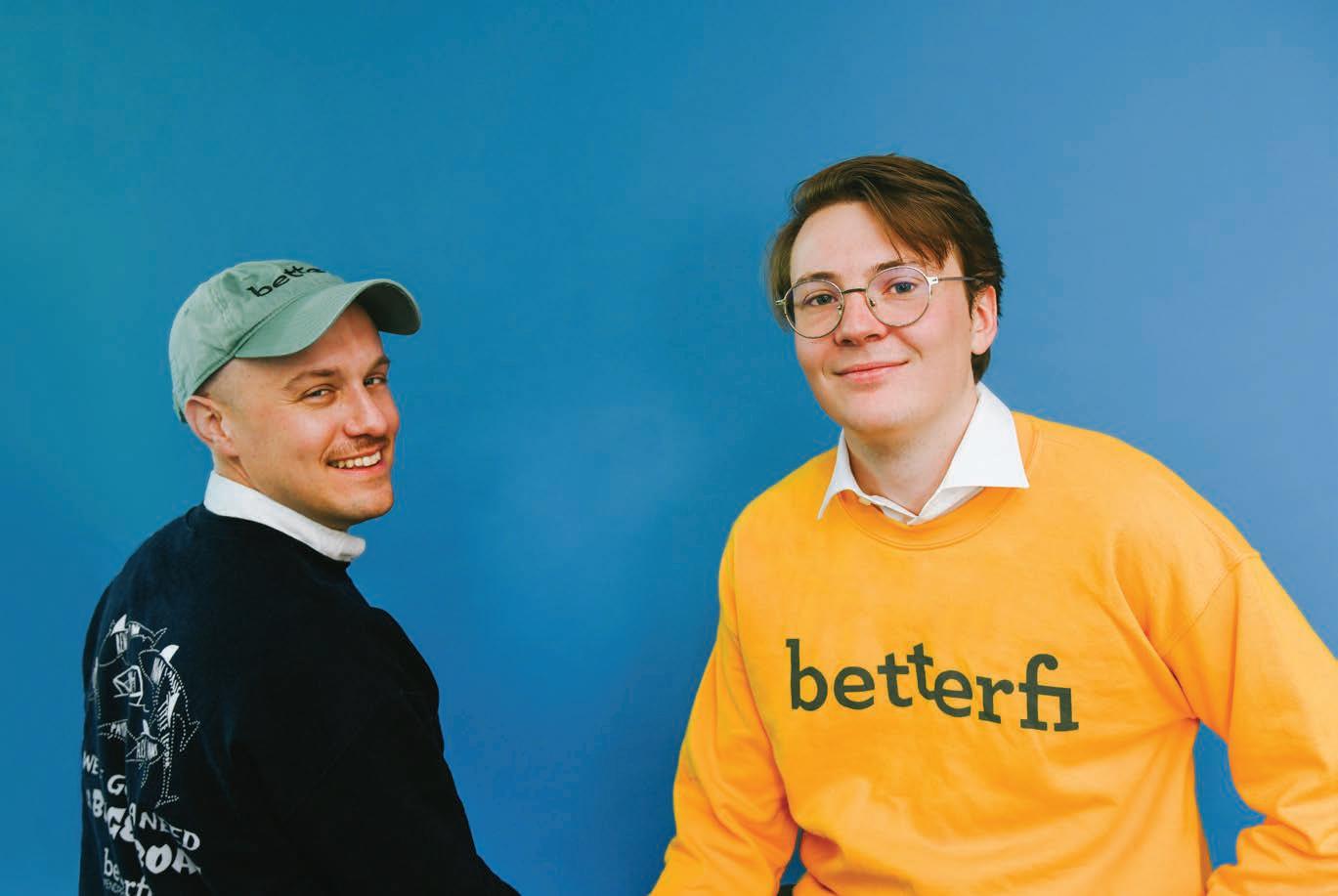
stitution that provides an alternative to payday loans — and its founder and executive director Spike Hosch.
“Spike had me join the program, which was fairly new at the time,” she recalls. “And within a few months, I had a much better situation as BetterFi got me out of those terrible loans, we consolidated and I re nanced with BetterFi at a much better rate and was able to a ordably pay my loans o . It took me a year or more but it was the best thing I could do for my peace of mind, business and credit. I am proud that I never got one of those [predatory] loans again and have been xing my credit ever since.”
Blinder, whose store carries handmade gifts, candles and pottery from both local and global makers, says she never felt insecure or ashamed working with BetterFi.
“I was heard, understood and counseled well,” she says. “I didn’t feel alone like I did in being scammed by companies o ering loans
disguised to help people but that [instead] put people in bad situations. e BetterFi payment plan was very reasonable. And if I was having a slow month, as I was still growing, BetterFi was patient and supportive in any situation going on. Communication was encouraged. It helped me keep low stress, keep making payments and chipping away at it until I had no more loan [debt]. BetterFi also helps educate people to be wiser with money choices and where to get loans, making sure you look at interest rates of the companies.”
Hosch, who is joined by Director of Operations Sam Shaw, says BetterFi has made solid progress since its incorporation in October 2017. It operates via a pilot program as a federally designated Community Development Financial Institution. e U.S. Department of Treasury certi es CDFIs, which seek to expand economic opportunity in low-income andnancially underserved communities.
BetterFi is known, in part, for charging 24 percent interest on its loans. ough carrying no small interest percentage, the loans provide an alternative to those o ered by payday, title and ex loan companies. And the 24 percent is only an introductory loan rate — the maximum the company will ever charge. Perhaps as noteworthy, there are no hidden fees.

“Yes, 24 percent is a high interest rate to charge for a loan,” Hosch acknowledges. “But the unfortunate reality is that making small loans is relatively expensive, and we are an order of magnitude cheaper than the existing alternative (for example, some Tennessee car title and payday lenders charge up to 460 percent per year). We don’t think that those who are less able to a ord a loan should face rates that make their loan even more di cult to pay. But we also aim to be nancially sustainable at scale without perpetually relying on grants and donations.”
Hosch says lending money has relatively xed costs that change little as loans increase in dollar amount, which is partly why conventional nancial institutions, such as banks, have shied away from small consumer loans.
“When we make a small loan, that 24 percent per year must cover the costs associated with the loan in addition to those xed costs, like equipment, compliance, utilities and employees’ wages.”
Hosch says the interest rate on BetterFi loans must also cover the money lost on loans that are not repaid.
“Even one of the best-run community lenders has a repayment rate of about 94 to 95 percent, meaning that 5 to 6 percent of their loans are not being repaid. We hope to reach repayment rates that are that high.”
Hosch says BetterFi would prefer to charge 4 percent interest rates rather than 24 percent, but that option is not practical.
“Consider just one of our costs, a single paid employee’s yearly wages of $35,568. We would need to disburse more than 1,630 year-long $1,000 loans at 4 percent and have every loan repaid to cover this cost alone. If even 1 percent of those loans were not repaid, we would need to disburse 749 more perfect loans to cover the lost ones.”
And a single employee, of course, is not BetterFi’s sole expense.
“ e realistic costs of disbursing, administering and servicing that many loans with no additional cost is a non-starter, and we would rather be an existing alternative to car title and payday
lenders than a ‘theoretical one,’” Hosch says.
“If borrowers demonstrate they will work with us to repay loans and progress through the nancial coaching sessions, they can receive cheaper loans from BetterFi,” he adds. “If they are ever in need, for example, of an additional emergency loan, used car loan or debt consolidation loan, their loans can be cheaper. As borrowers take loans from us, we hope to help them build their credit score so that they can eventually access more reasonably priced nancial services.”
Hosch says various nance and banking professionals contend BetterFi cannot successfully execute its model long term.
“We are hoping to prove them wrong,” he says. “If we nd at the end of our pilot that we can do it even more cheaply, we will reduce our rates. We speci cally chose a lending license in Tennessee that lumps interest and fees together in terms of dictating what is legally permissible.”
Hosch says a key goal is for BetterFi to never require more than 10 percent of a borrower’s income to go toward retiring her or his BetterFi loan debt.
“We work with our borrowers to determine an amount that will strike a balance between shortening the life of the loan while also being a reasonable recurring payment,” he says. “Especially if a borrower has been paying a substantial amount per month on a series of predatory loans that possibly will stretch on into the future, we often can create a payment plan that will allow them to reduce their monthly payments while paying o the loan relatively quickly. We see this as a win-win as their payments become less and they pay o the loan quickly, even if it does not meet our ideal of requiring no more than 10 percent of a borrower’s income.”
Anne Leland Clark, executive director of St. Paul, Minn.-based Exodus Lending, says the payday lending industry started in Cleveland, Tenn., following the banking deregulation of the 1980s. e industry remains prominent in Tennessee.
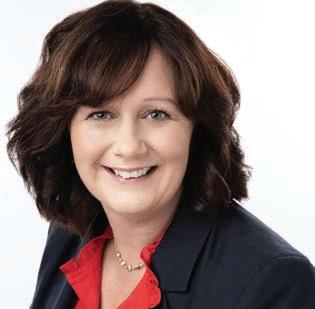

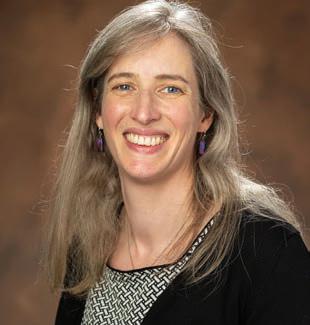
“It is important to see BetterFi resolving the issue in a state that doesn’t regulate the predatory payday lending industry,” Clark says. “Currently 18 states and the District of Columbia have enacted rate caps of 36 percent or less. And nationally there is a 36 percent rate cap for active duty military and their families thanks to the Military Lending Act. But until there are common sense protections for consumer lending in Tennessee, nonpro t lenders like BetterFi are needed to provide relief from a lending model that is not designed around a consumer’s ability to repay.”
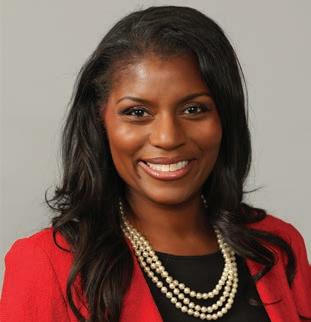
Clark says BetterFi provides relief from the lump-sum, balloon payments and usurious interest rates by restructuring debt into a ordable and exible monthly installment payments that build credit rather than trigger repeat lending, over-
draft charges and bankruptcy.
“BetterFi will always have a place while predatory lending remains unregulated and as communities turn to predatory loans to resolve urgent nancial challenges,” she says. “While it is promising that there are more and more banks and credit unions o ering small-dollar loan alternatives, a patient and exible lender like BetterFi, which provides wrap-around nancial health programming like nancial coaching, will always have a place in our consumer ecosystem.”
Bill Titus serves as chair of BetterFi’s board and retired in early 2022 after working as audit director at Nashville-based FirstBank. He says addressing the needs of Americans unable to access credit from traditional banks is not a new problem.
“Originating and collecting on very small-dollar loans remains too time-intensive for lenders to do pro tably or even as a ‘loss leader’ activity to develop future ‘good’ customers,” Titus says. “Title, cash advance and payday lenders have grown tremendously serving this underserved population. Historically they have competed for new customers with o ers of referral bene ts to existing customers.”
However, Titus says “basic American capitalism” has not motivated such businesses to compete for more credit-worthy customers on rate and length-of-loan terms. As such, he notes, high-rate, one-month loans remain standard o erings.
“What BetterFi’s existence highlights is this is truly a nancial social justice issue impacting Tennesseans least able to access any other options,” Titus explains. “Adequate loan analytics — including arti cial intelligence decisioning combined with easy online application processes — should someday change life for these borrowers.
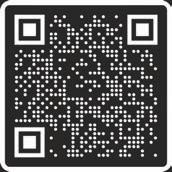
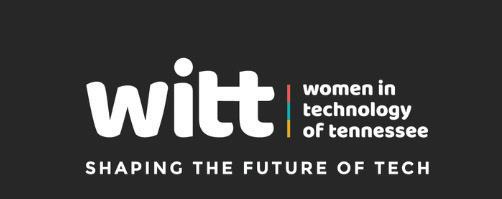
irtual meetings and even check-ups became part of the medical routine during the COVID-19 pandemic. As patients return to the hospital for care and sta ng shortages remain, area hospitals are in-
troducing technology in an e ort to improve patient and provider satisfaction.
Here’s what three local organizations are trying:
Ardent Health Services is year, locally based acute care hospital operator Ardent has leaned into telehealth technologies. In January, the company announced a partnership with local AI venture studio Switchpoint Ventures, the same partnership that led to its Winnow AI recruiting technology.
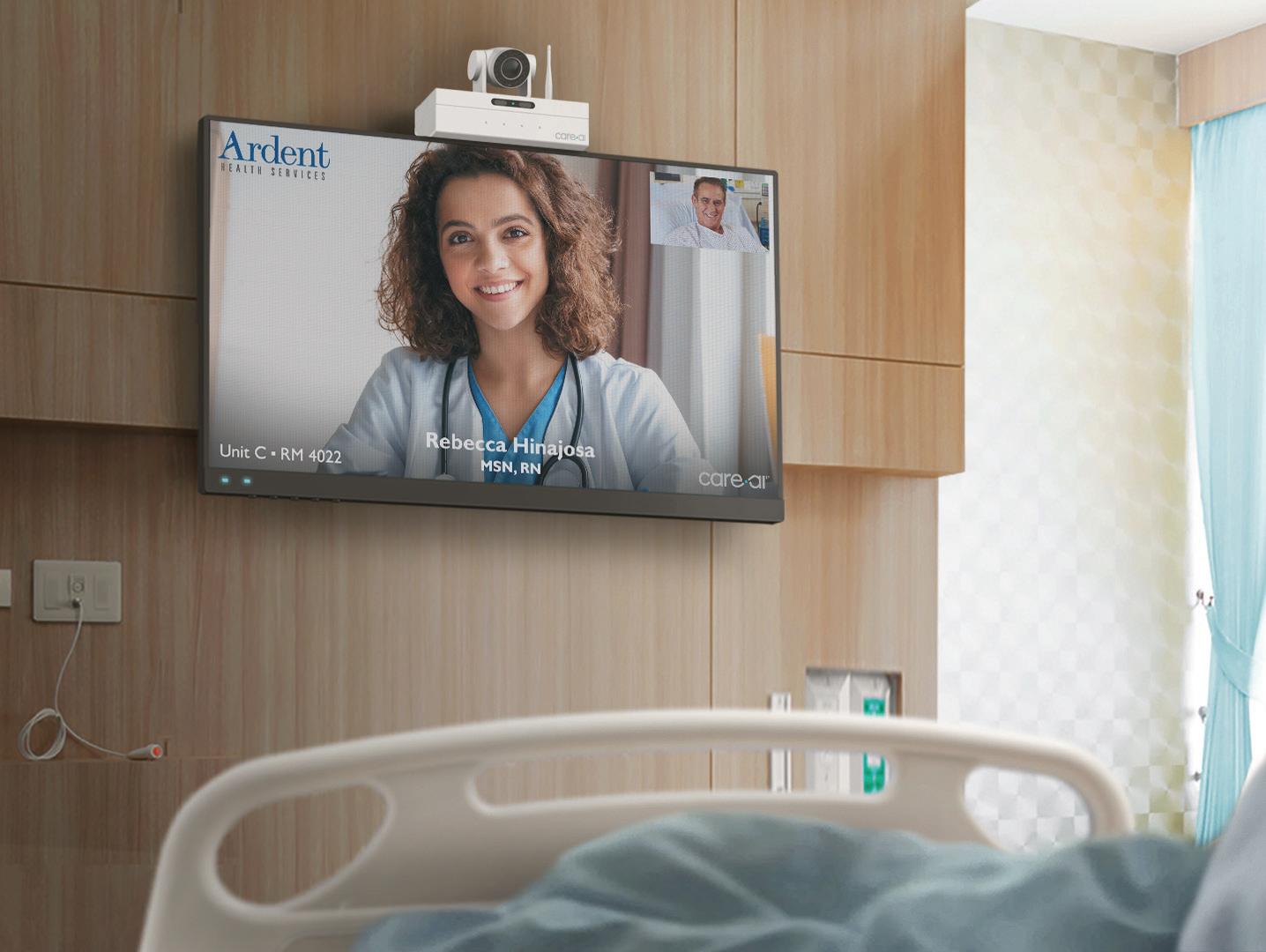
e health care innovation studio will focus on building new companies in three areas, Ardent CEO Marty Bonick tells the
Post: engaging with patients through smart phones, care redesign within the hospital and care beyond the hospital.
Bonick says when it comes to the health care industry, “we know what our problems are.”
“It’s a system that’s rooted in the ways that it’s always been, and there’s a lot of venture capital dollars chasing the next Uber or Airbnb for health care, whatever that’s going to be,” he says. “ ere are not a lot of people chasing what goes on inside the hospital — in terms of how we make that better and work within the system’s constraints and limitations.”
Within the hospital, Ardent has introduced the BioButton from Colorado-based tech
company BioIntelliSense. e BioButton sits on the patient’s chest and measures heart rate, respiratory rate and skin temperature.
“ is automates the capture of the vital signs, so we’re taking workload o of our nurses, and we’re able to capture more vital signs than we would otherwise,” Bonick says. “We can essentially get ICU-level monitoring care in a [medical-surgical nursing] environment.”
Ardent also aims to take the administrative burden o nurses using Florida-based software company Care.ai’s technology. rough a screen in the hospital room, remote nurses can interact with patients to, for example, collect medication history information or give instructions for discharge.
In addition, Ardent’s partnership with New York-based remote patient monitoring company Cadence extends care to the home, with a patch that monitors patients for up to 30 days, so that Cadence sta nurses can intervene if necessary and prevent readmission.

Bonick says these technologies have been well received.
“We’ve had this mentality that we built these hospitals and you must come to us, and I think COVID has changed that in a way in which people realize there are options and they don’t necessarily have to come to the hospital for everything,” he says. “When they do, we need to be smarter about how we interact with patients and how we are taking care of our teams to be able to deliver better care.”
In the rural hospital setting, administrators struggle to nd enough sta to manage care. In addition to hiring advanced practice nurses and physician assistants, Ascension Saint omas’ six rural hospitals have upped their telemedicine platforms. Tablets allow specialized Nashville physicians to help diagnose and treat patients in rural emergency rooms, including for stroke treatment, neurologic emergencies and cardiac emergencies.
Telehealth physicians can also help troubleshoot dialysis treatment at Ascension Saint omas River Park in McMinnville, Tenn. It is rare to nd dialysis services in rural communities, says Neal Kelley, regional hospital president at Ascension Saint omas.
“Our philosophy really is to provide as much of the care as we can appropriately and safely provide as close to home for our patients, and so we continue to invest in both
technology and care improvements in our rural hospitals,” Kelley says.
In addition, Saint omas has partnered with the University of Tennessee Health Science Center to pilot a rural track for family medicine residents.
“If you work in a rural environment, you don’t have the same level of backup, you don’t have a cardiologist upstairs, you don’t have an anesthesiologist down the hall to call to come help,” Kelley says. “A lot of times you are the doctor and you are the one making the calls and providing the care. It takes a special person who’s willing to take care of their neighbors in a di cult situation with skill.”
e surgical industry is bouncing back after the pandemic put elective surgeries on hold.
ose elective procedures are again making up a big chunk of hospital revenues. At Axis Research and Technologies’ medical training center in Nashville, surgeons are piloting locally based medical tech company Omnimed’s SmartOR software to optimize surgery logistics.
“It’s a lot like the airline industry,” says Mark Freeman, chief medical adviser at Axis. “You have to have planes arriving on time and leaving on time. You have to have pilots and crew switching. You have to have resources with food or with gas or energy. It’s the same thing in the OR environment. You need the patients to show up on time, you need anesthesia sta , nursing sta , surgery sta , you need instruments.”
SmartOR can track the logistics while also recording changes in air ow, temperature and humidity in the room. e tech identi es when a patient enters the room and leaves the room, in addition to anesthesia and tourniquet times.
Shortened anesthesia times bene t the patients, and shortened stays in the room for the procedure can open up space for another surgery, helping keep a tighter, more reliable schedule for nurses. However, the optimization stops short of rushing the process, Freeman says.
“If we can shorten surgery times — not by trying to be too fast and cut corners but by taking away the wasted time, the wasted steps — you will have a more successful outcome, hopefully a safer outcome and certainly a more satisfying experience for the patient and families who are waiting in the waiting room,” Freeman says.
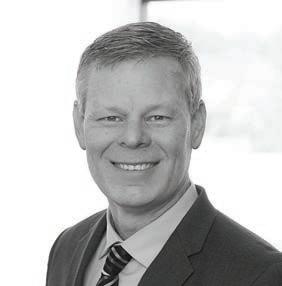



























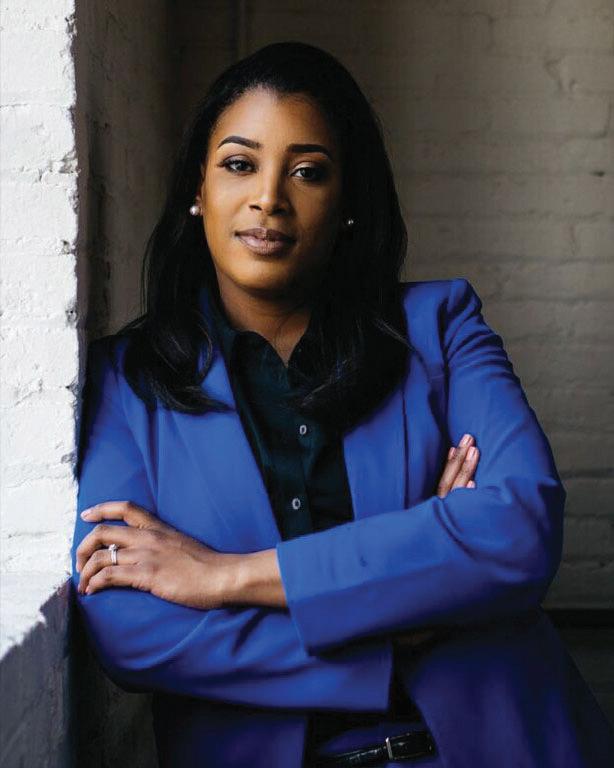












alking a few blocks down the street to the gas station for a snack and drink involves a deceivingly high number of steps: remembering the route, checking for cars at each intersection, greeting the occasional neighbor, exchanging money and conversation with the clerk.
As part of a new state program, Medicaid Alternative Pathways to Independence (MAPs), coordinator Donna Bryant helps her client Warrick make it to the gas station and back independently. When she’s not there, a phone application can prompt him in nding his way.
MAPS launched in November 2022 and is fundamentally di erent from how the state typically provides services, says Jeremy Norden-Paul, director of the Division of Program Innovation with the Tennessee Department of Intellectual and Developmental Disabilities.
e three-year program is available to any-
one with an intellectual or developmental disability diagnosis who has graduated high school or will graduate within three years, and it is meant to support those not enrolled in another long-term services and support program o ered by the state.
“ e primary target audience are what we call transition-age people who are in a period of life where they’re getting ready to leave high school and transition to adulthood and gure out what their adult life is going to look like,” Norden-Paul says.
e program is customized to the participant’s goals, using color-coded Google maps to mark signi cant locations in the community and give the client helpful prompts in navigation. Bryant, a MAPS coordinator with contracting organization e Arc, works with around 20 clients for about an hour at a time, at least twice per month.
Across her clientele, some are learning to safely cook within the home, others to drive or use public transportation, and still others to create a budget, nd employment and secure independent housing. People can decide what places are important, be it a drug store to pick up medications or a gas station down the street to get a snack. Each time they reach a goal, Donna, the client and their family meet to create a new one.
“It’s also empowering the person to be able to advocate for themselves, make plans for themselves, help the parents and the member plan for that person’s future because a lot of times people are not thinking about their future,” Bryant says. “What happens when the parents pass away?”
Norden-Paul says MAPS gives service providers more exibility than other state programs, which tend to have more strict protocols on the number of hours and services provided.
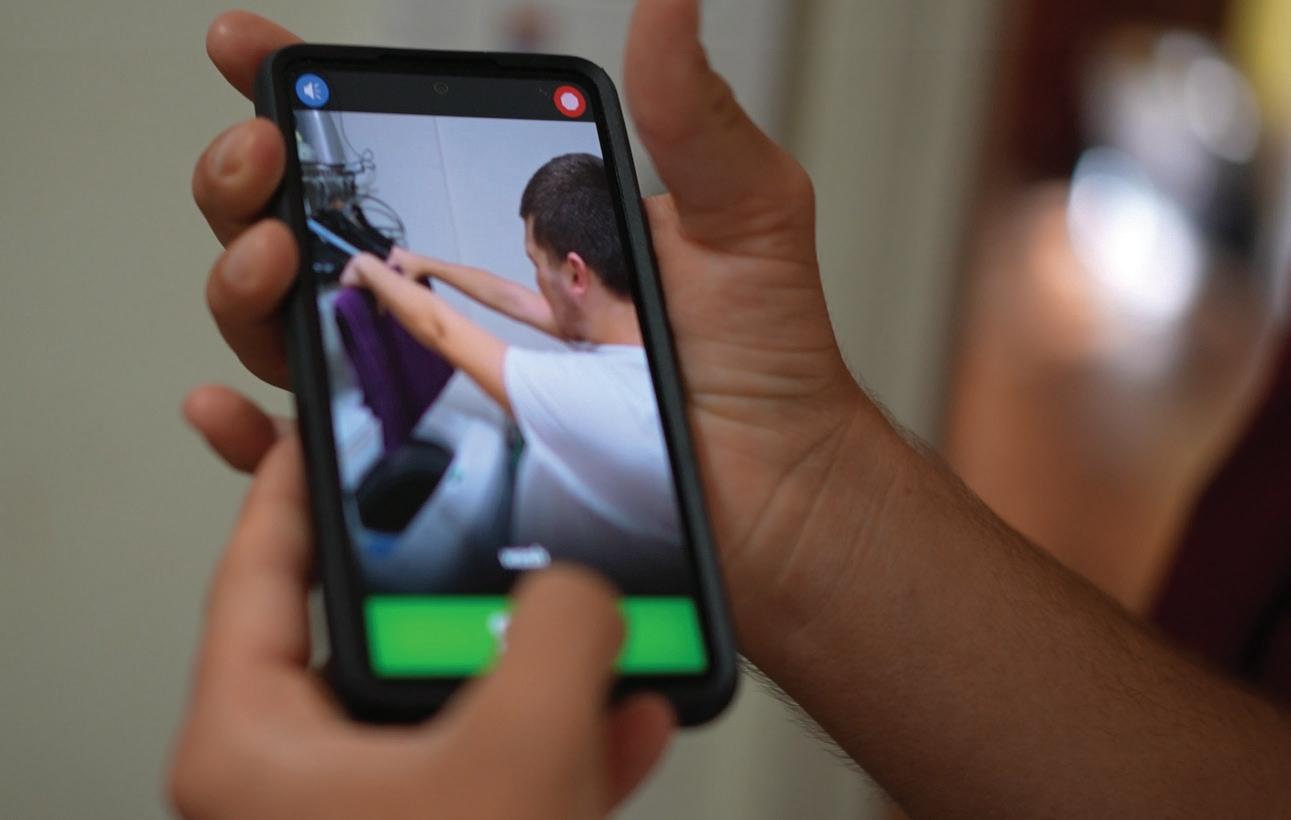
“ ere’s this emerging approach to services called ‘outcomes-based,’ and those are valuebased payments,” he says. “Instead of going by day or hour, they go by goal, and reimburse after reaching that outcome.”
Along with the hope of more independence for the person with disabilities, Bryant says a welcome side e ect is helping families know about the resources available for people with disabilities, and for community members to get to know each other.
“Before I leave every time, I ask them how they feel. Do you feel like you are making a di erence? Are there any barriers? Everyone including the parents are reporting that they’re seeing changes in the person they love. Either they’re already self-su cient and they didn’t realize it and they’re gaining more con dence, or they’re becoming more self-su cient.”
New state program for those with disabilities seeks to build independence
Fisk’s Freeman Center will connect entrepreneurs and students with resources
BY NICOLLE S. PRAINOolly Rachel is an entrepreneurial leader in Nashville’s technology industry, and now she is taking on the role of executive director at the Darrell S. Freeman Sr. Incubation and Innovation Center at Fisk University.
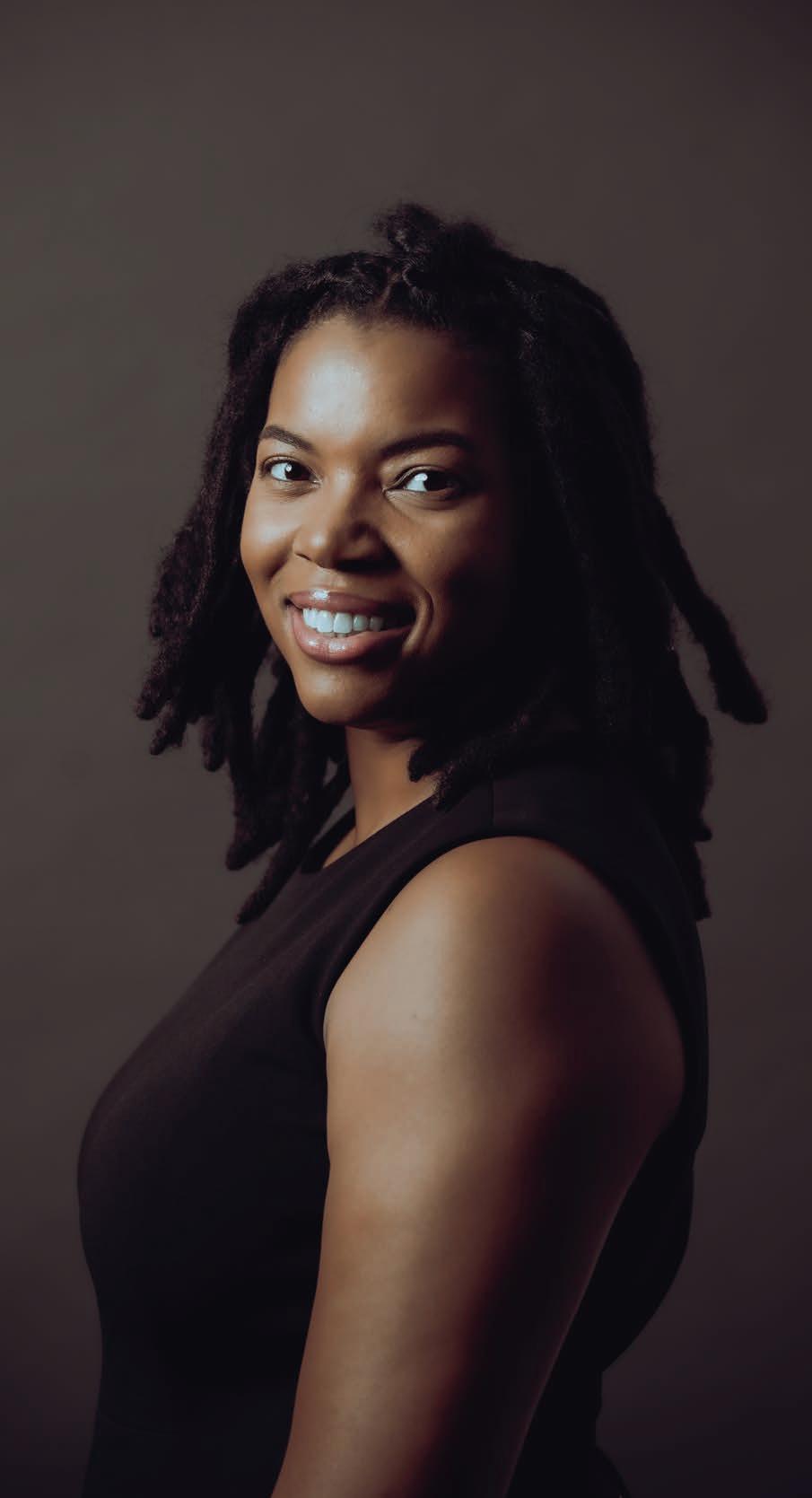
Rachel was a key part of the team that established the vision for the Freeman Center, which was funded last year as part of Metro’s American Rescue Plan disbursements. Now, she says she is ready to lead the way in creating a community and resources for minority-owned businesses and tech startups.
“For minority-owned businesses, sometimes you hit a lot of obstacles when it comes to funding or nding people who share your experience,” Rachel says. “One thing that I think can overcome that is by broadening that network for our businesses that join the Freeman Center.”
One goal is to create relationships with more companies to build a national network so that founders can nd the resources and support they need and businesses in science and tech disciplines can stay here to grow.
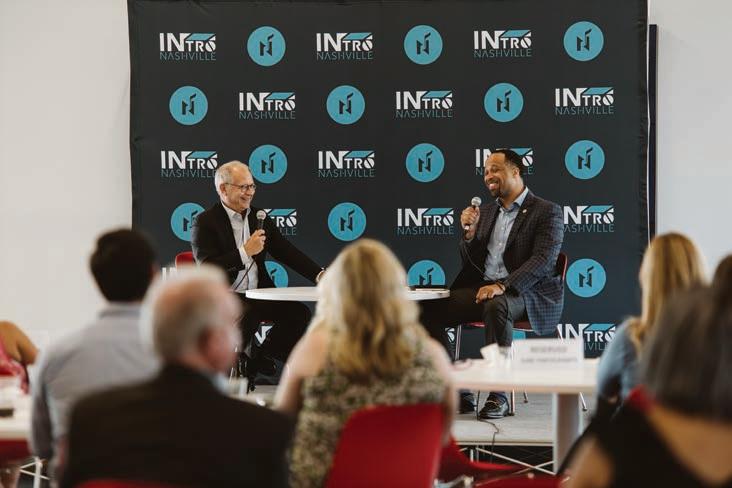
“I’m open to connecting with people who are outside of the Nashville area,” Rachel says. “I feel that building that diverse network and ecosystem around these founders will really be bene cial to them.”
e center will host programs like tech boot camps, mentoring sessions and workshops. e goal is to become a starting point for entrepreneurs developing their businesses and pursuing investment opportunities. e center was named after Nashville Entrepreneurs’ Hall of Fame honoree Darrell Freeman, who died in June 2022 soon after he was announced as a partner with Fisk on the business incubator. Rachel acknowledges Freeman’s mentorship to hundreds of young businesspeople in Nashville and says the center will continue his legacy.
“Particularly in the North Nashville area, making it something that’s very accessible to the community, that is de nitely a big part of helping Nashville continue to grow and thrive,” she says. “We’re really excited to be able to play a part in that and step out into the space and start providing resources and services.”
e center aims to create a community that will help foster partnerships between students,
startups, investors and other collaborators.
“When you’re in an academic setting, you’re in college, you don’t get to necessarily network and get together and learn from people who are already in business,” Rachel says. “When you’re in business, you don’t get to utilize new fresh ideas from young people. And so this is a way to bring those two worlds together.”
Rachel has more than 15 years of experience helping companies and founders reach their goals. She launched a technology consulting rm with her business partner Lena Winfree to help businesses scale with data. ey also chartered the Nashville chapter of Blacks in Technology, a global organization aimed at increasing the number of minorities in tech by expanding education opportunities.
As BIT president, Rachel grew the membership to one of the largest chapters in the U.S., according to a release. She has created education programs focused on high school students and careers in health care data.
Rachel says her work in growing BIT Nashville is similar to what she will be doing with the Freeman Center: developing a community for minorities who work in the technology industry.
“When we started BIT Nashville … this was our chance to really build that community that we have been looking for,” Rachel says. “I kind of view [the Freeman Center] as an extension of that.”

lean energy is a burgeoning industry in Tennessee. Between established companies and those moving here, the state’s unique capacity to produce clean energy and plenty of creativity to drive it forward, Tennessee has the potential to become a valuable asset in the American decarbonization journey. While state leaders and powerhouse entities like the Tennessee Valley Authority or the Oak Ridge National Laboratory are encouraging growth to some degree, the environmental and economic gains associated with the industry have yet to be fully realized. ere is an entire industry of people pushing for that to happen.
e Tennessee Advanced Energy Business
Council was established to connect the clean energy-related work happening across Tennessee’s di erent regions and sectors. It casts a wide net. To acknowledge a large scope of businesses and operations, the TAEBC uses the phrase “advanced energy” to describe “any technology that makes energy cleaner, safer, more secure and more e cient.” is technology may come from manufacturers, entrepreneurs, researchers, service providers, software companies and others. Members include Volkswagen, Verizon, the Tennessee Department of Environment and Conservation and Piedmont Lithium. e TAEBC’s most recent advanced energy economic impact report indicates that in 2019, the sector was responsible for hundreds of thou-
sands of jobs in Tennessee. If the industry is following trends from past years, that number has likely grown signi cantly.
While the concept of advanced energy is helpful to describe the wide reach of clean energy business practices and models, not all organizations are solely focused on this work, and some forms of energy are cleaner than others. Nuclear energy, for example, is among the cleanest forms of energy, and it’s one that the state is leaning into. According to the U.S. Energy Information Administration, it is already Tennessee’s third largest source of energy consumption behind natural gas and motor gas. Gov. Bill Lee recently signed an executive order establishing a state Nuclear Energy
Advisory Council, which will be a part of TDEC. e state legislature added $50 million to the state budget to encourage nuclear power-related business growth. Conversely, state legislators also passed a law de ning natural gas as clean energy. ough it releases fewer emissions than coal, it still emits greenhouse gasses that contribute to climate change.
e TVA — the nation’s largest public power provider — is expanding its natural gas production, though it has been met with a lawsuit from environmental groups that claim TVA didn’t properly consider alternative forms of cleaner energy as required by federal law.
Burning coal, oil and gas is the largest driver of climate change because these fossil fuels’ emissions release greenhouse gasses that trap the sun’s heat and warm the earth. Increased temperatures cause ripple e ects such
as droughts and increasingly extreme weather events. Finding cleaner energy sources is a priority for countries around the globe, and many are legally bound to take climate action after signing the Paris Agreement treaty in 2016 (the U.S. signed the original agreement, withdrew itself under the leadership of former President Donald Trump, and rejoined when President Joe Biden took o ce). e Paris Agreement seeks to avoid the most catastrophic e ects of climate change by limiting global temperature increases to at most 2 degrees Celsius, with a goal of 1.5 degrees Celsius. e most recent Intergovernmental Panel on Climate Change report, however, warns that the world — and the U.S. — isn’t moving fast enough to meet this goal. Tennessee ranks among the top third of states regarding energy consumption despite an immense capacity for clean energy.
TAEBC Executive Director Cortney Piper says that barriers to realizing Tennessee’s advanced energy capabilities include a lack of connection, collaboration and communication. She also names a lack of economic development opportunities for smaller companies as a barrier.
“ ere’s still more work to be done in terms of getting all of our elected o cials up to speed on the breadth and depth of the advanced energy industry and how it signi cantly contributes to our economic growth and development,” says Piper. “At the Tennessee Advanced Energy Business Council, we assume that as our responsibility.”
Even in the face of these barriers, compelling work and collaboration is still happening across the state, particularly in the private sector. Companies are seeing the bene ts of utilizing and investing in advanced energy for

several reasons, including consumer demand. Educational institutions are also fostering the next generation of clean energy leaders. e University of Tennessee Spark Innovation Center’s incubator program provides support to technology startups by providing lab space, mentorship and business support for two years. Most of these businesses, though not all of them, prioritize clean technologies, and the program won an award from the U.S. Department of Energy within its rst year. e Spark Innovation Center further encourages clean tech development through its 12-week Cleantech Accelerator, presented in partnership with Evergreen Climate Innovations. e program supports budding clean tech businesses with a concentrated dose of services, support and connections and is a member of the Heartland Climate Tech Partnership, which seeks to expand climate tech and clean energy business across the greater Midwest.
“Doing clean tech, building businesses, promoting and rewarding the innovators and the entrepreneurs who are involved in clean tech is the right thing to do,” says John Bruck, director of the Spark Innovation Center. “ at’s one pathway. at’s one strategy to helping out the planet. And in the meantime, we build new, very cool tech-based companies and we build East Tennessee and overall Tennessee into a better place.”
One established and particularly innovative clean energy company is Nashville’s Clearloop. Co-founded by CEO Laura Zapata and COO Bob Corney in 2019, Clearloop seeks to decarbonize the electricity grid by allowing companies to “reclaim their carbon footprint.” (Clearloop was later acquired by solar energy company Silicon Ranch — like Clearloop, a venture co-founded by former Tennessee Gov. Phil Bredesen.) e company does this by allowing businesses to enter purchasing agreements used to build solar farms that e ectively o set the carbon used from operations like travel or running data centers. Clearloop funnels that capital into building solar farms that support communities that are, as Zapata puts it, “carbon-intense,” or areas that rely heavily on fossil fuels in the Southeast. is process provides renewable energy alternatives in places where there aren’t many.
“You’re creating [carbon] somewhere and you’re trying to take it out of another part of the economy,” explains Zapata. “What we’re saying is you can actually clean up the grid for that amount — if you’re really intentional about where you build these projects.”
Zapata is careful to use “o set” as a verb rather than a noun. ere is an entire industry focused on carbon o sets and carbon credits, or the idea that a company can make up for its carbon footprint by funding projects that bene t the environment. Over the years, various investigations have found that some organizations have bought and sold carbon credits that haven’t had the climate-positive impact that was promised, which renders climate-positive claims useless and even harmful as they correlate to climate-friendly marketing with no meaningful action. A ProPublica investigation, for example, found carbon credits that promised to prevent deforestation in the Amazon didn’t actually prevent as much deforestation as intended for a variety of reasons, and the promised climate impacts of these credits were di cult to truly quantify. Critics also argue that carbon credits serve as placeholders for companies to avoid meaningful climate actions within their own operations while still touting climate-friendly practices. e Voluntary Carbon Markets Integrity Initiative recently released guidelines for
companies seeking meaningful climate engagement. ey include releasing more transparent, science-based information about a company’s internal emission reports and climate goals and not leaning on carbon credits to account for a company’s climate plan, but to augment it with.
Clearloop’s approach to o setting emissions leans on transparency and the ability to track outcomes — key factors missing from other o set claims. e company’s solar farms are built in the U.S. and come with dashboards that track how much carbon is being avoided and how much solar power is being generated in real time. It has established solar farms in Jackson and Paris, Tenn. Plans are in progress for a farm in Panola County, Miss., and North Louisiana, among other future projects. Clearloop’s solar farms are in places where solar power makes up less than 1 percent of the electricity grid. ey’re also near underresourced communities that can bene t from the solar farm by tapping into cheaper energy and better infrastructure.
“[If companies] are spending money on this stu , we want to make sure that they’re spending it on some real infrastructure that we can show that they’re actually accelerating the decarbonization of the grid, and then invest in the communities that really could bene t the most,” says Zapata. “It’s real investment happening in a community that may not have seen any investment in a long time, climate or not.”
Clearloop demonstrates how innovative solutions can facilitate a multi-faceted approach that addresses economic, environmental and social issues. In a state like Tennessee, where some elected leaders aren’t as concerned by climate change, leaning into the economics of advanced energy presents a di erent yet meaningful case for future investment. e demand for cleaner energy is apparent, the need urgent. While the clock is ticking on climate-related goals, there is no shortage of innovation within the advanced energy eld.
“Tennesseeans are a part of a new energy future,” says Piper. “We are manufacturing products right here from Tennessee. We are creating new job opportunities. … is industry is robust and it’s growing in Tennessee and we are making contributions that not only affect us, but the entire planet.”
“Doing clean tech, building businesses, promoting and rewarding the innovators and the entrepreneurs who are involved in clean tech is the right thing to do.”
JOHN BRUCK, SPARK INNOVATION CENTER
letes, were working next door to one another at Vanderbilt University about a decade ago when they discovered a shared love of sports.
ey even watched the NFL Draft together in 2013, listening to analysts repeat a few phrases that made them think.
“It seemed like they were always using terms like ‘plays faster than his footspeed’ or ‘has a nose for the ball,’ anticipation kind of things,” Ally says. “We were kind of like, ‘You know what? We measure that kind of stu all the time in our labs.’”
So were born the seeds of the S2 Cognition test. It’s a 30-45 minute digital evaluation run
through a gaming laptop, intended to measure an athlete’s unique cognitive skills with unprecedented precision and accuracy.
Its popularity and e ectiveness led to the creation of a Nashville-based company, S2 Cognition, in 2014, and the S2 test is now being used in a wide variety of professional and youth sports.
Unlike assessments that de ne an athlete in terms of tangible assets like speed and strength, the S2 system seeks to make the seemingly unde nable more quanti able. e aim is to gauge how individuals track and process information in visual environments,
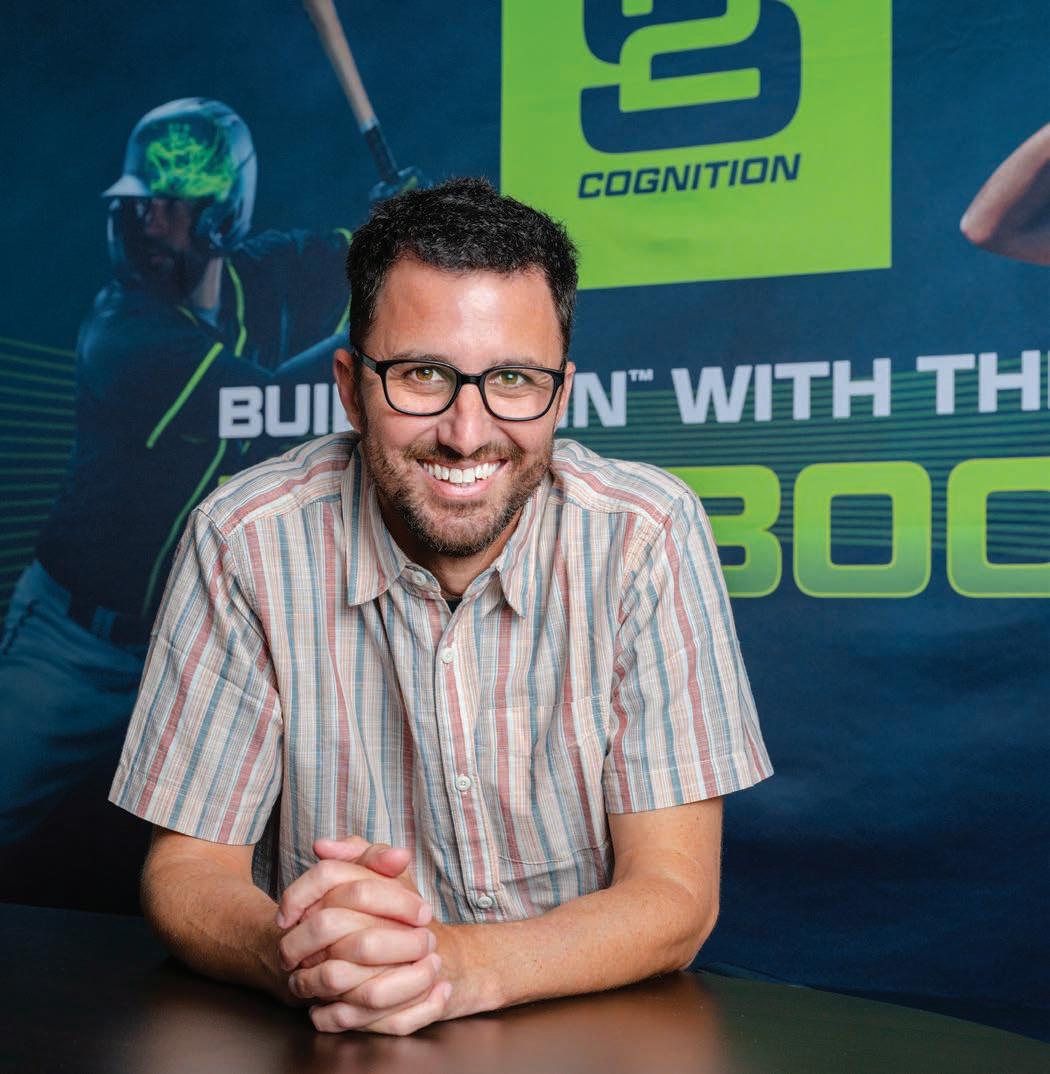
as well as how they execute split-second decisions to start, stop and change actions.


“We study vision and we study motor control — how you inhibit responding impulsively to certain things that we’re forcing you to bite on, how to shield your motor system in the face of distraction, those kinds of things,” Ally says. “So we capture how [athletes’] brains are wired, the capacity for that system, and then we talk with coaches about how that will likely manifest on the eld of play.”
Ally frequently has to point out that the S2 is much di erent than the Wonderlic test, a 50-question exam designed to measure intelligence through cognitive and problem-solving ability long used in assessing NFL prospects.
e S2 is more an indication of how quickly and accurately athletes process information.

“We measure the capacity of each cognitive system, and the cognitive systems we know you have to use on the eld,” Ally says. “We measure essentially sub-second reactions to di erent types of stimuli that could create con ict in your visual eld or just need you to rapidly identify something. So it’s completely devoid of IQ, of book-smart kind of things. It’s just purely visual-reaction based.”
Youth, college and professional sports — such as the NFL, NBA, MLB, NHL, MLS and NASCAR — have been using the S2 now for years. at group includes the Tennessee Titans and Vanderbilt’s baseball team. Ally said S2 has also now moved into the world of military and law enforcement.
But the test’s visibility seems to have risen signi cantly over the past few years, in part because 16 NFL teams — half the league — now utilize S2 data testing, and in part because of how those numbers relate to the NFL’s drafting of quarterbacks.
e increased rush of recognition began when Ally and his colleagues worked with former LSU quarterback Joe Burrow, with the two sides agreeing Burrow’s S2 score could be used on the company’s site for promotional materials. Burrow aced the test with a score of 97 percent (68 is considered average and anything over 80 is considered elite), went on to become the rst pick of the 2020 draft and has been a star for Cincinnati ever since entering the league.
A second wave of attention came in 2022, when San Francisco rookie quarterback Brock Purdy, an unheralded seventh-round draft pick, stepped into the 49ers lineup because of injury and led his team to seven straight wins. It was reported Purdy had scored in the “mid-90s” on his S2 test, furthering the idea in the minds of many that the S2 was a good predictor of success at quarterback — which just so happens to be the most important position on the eld.
en came the unauthorized — and disputed —
leaks of S2 quarterback scores leading up to the 2023 draft last April, when it was reported that prospects like Alabama’s Bryce Young (98 percent) and Kentucky’s Will Levis (93 percent) had done very well, while others like Tennessee’s Hendon Hooker (46 percent) and Ohio State’s C.J. Stroud (18 percent) lagged far behind.
ose numbers prompted immediate debate among NFL analysts.
Dan Orlovsky, a former quarterback in the league, praised Stroud’s cognitive ability, writing that the prospect “plays very intelligent and [processes] a lot of information.”
Asked about Stroud’s supposed score, Titans general manager Ran Carthon said leading up to the draft that S2 evaluations weren’t a make-or-break factor for him when it came to analyzing quarterbacks.
“It’s a part of the analytics piece,” Carthon said at the time. “It’s not the end all, be all. But it’s just another way for us to use and evaluate players. Whatever the test scores are, they are. It makes us go back and do homework, one way or the other.”
In the end, Young was drafted rst overall by Carolina, Stroud second by Houston and Levis 33rd by the Titans.
Ally and Wylie, now both working in the neurosurgery department at the University of Louisville, have earned plenty of attention because of the S2’s use by professional sports teams. e two friends, however, remain guided by their original mission in creating the S2: to help young athletes, especially those in the 12-15 age range, develop.
One reason? Once athletes get into their mid20s, the brain’s wiring tends to be fairly stable, limiting the amount of change that can be made following S2 testing. e earlier an athlete learns what he or she must do to rewire the brain — based on S2 feedback — the more time there is to bene t from it.
“Fifty percent of the kids out on the Little League eld or the ag football eld, if you asked them, they would say their goal is to play college ball,” Ally says. “So to try to help them reach that, to help them have a little bit of success, feel a little more successful, be more con dent in themselves and their ability [is what we want].
“I think sport has the ability to change peoples’ lives, the way they think about themselves, the way they interact with people. So the more people that can help nd success and enjoy sports is the ultimate goal.
“Getting into that youth space just seems really exciting. It’s daunting. We don’t even know where to start. But getting into that youth space seems like it’s a critical mission for us.”
dvancements in automotive design are moving at a rapid pace.
About as fast, it seems, as impatient motorists zipping along the interstate at 80 miles an hour or more.
One local group believes arti cial intelligence-equipped cruise control systems used in conventional vehicles can provide increased fuel savings and safety — while minimizing congestion — on those interstates.
e CIRCLES Consortium — consisting of personnel from Vanderbilt University, the University of California, Temple University and Rutgers University, in coordination with Franklin-headquartered Nissan North America, local design rm Gresham Smith and the Tennessee Department of Transportation — conducted a ve-day open-track experiment in November 2022. Using 100 Nissan Rogue vehicles with adaptive cruise control and a sensor- lled segment of Interstate 24 located about four miles southeast of downtown Nashville, the group determined that a single AI-equipped vehicle positively in uenced the speed and driving behavior of up to 20 nearby cars.
e CIRCLES Consortium conducted the test on what is called the I-24 MOTION test bed, which is billed as the world’s only automo-
tive testing environment of its kind. e “smart highway” is equipped with 300 Axis Communications 4K digital sensor cameras — mounted on 43 110-foot-tall poles and capable of logging 260 million miles of vehicle data per year.
Arranged in clusters of six along the open stretches of I-24 and clusters of 12 at its exit ramps, the cameras captured during those ve days the time and space trajectory of every test vehicle that used that segment of the interstate.
e four-mile test bed site stretched from State Route 254 (Bell Road) in Davidson County to Waldron Road in Rutherford Coun-
ty, an interstate segment that was su ciently long to have provided ve minutes or more of visibility per vehicle for the test.
On Nov. 16 alone, the system recorded 143,010 miles driven and 3,780 hours of driving.
“Before we started designing, our rst step was researching what other cities had done and applying best practices from those to design I-24 MOTION, which is a rst-of-its-kind project because it takes place on an active interstate,” says Meredith Cebelak, Vanderbilt adjunct instructor of civil and environmental
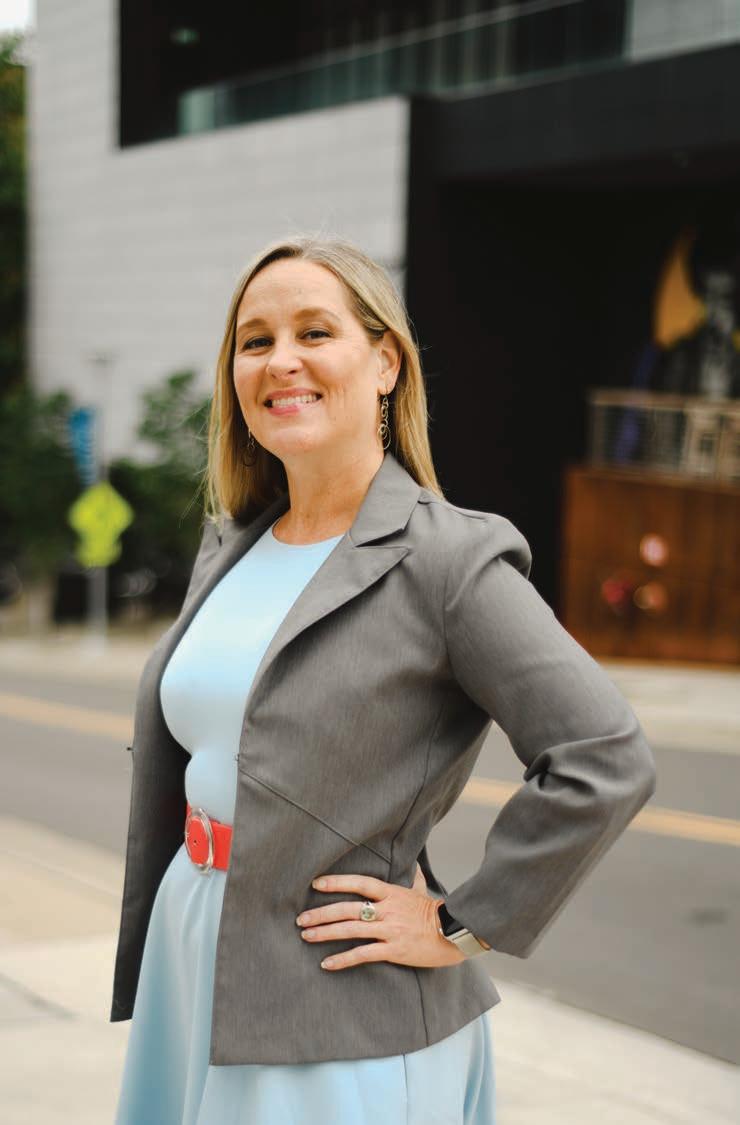
I-24 test shows AI-powered systems can yield fuel e ciency, tra c safety improvements
engineering and a Gresham Smith transportation systems management and operations department leader.
“Interviewing the owners and operators of existing test beds [in other markets] helped us to understand the di erent approaches taken,” she adds. “ is information helped the team to recognize the need to design a system that could be expanded in the future to address the changing needs of the transportation community.”
Cebelak says testing in actual tra c captures the variability of real-world conditions and human behavior. Data from the test bed can be generated under various conditions and on a continuous basis, which will allow for greater insights into the behaviors of drivers of all types.
“By translating data from each camera, the team can develop a complete, yet anonymous, trajectory for each vehicle with measurements made many times per second,” she says.
About $11.9 million in funding for e CIRCLES Consortium was provided by the National Science Foundation and the federal departments of transportation and energy, with support from Toyota North America and General Motors (as the experiment included a Toyota RAV4 and a Cadillac XT5).
Cebelak says the project team has since given presentations at industry events, including the annual meeting of the Transportation Research Board in Washington, D.C. e project has also received industry awards, including from the Institute of Tra c Engineers’ Southern District at the ITS America Conference.
In Tennessee, I-24 MOTION won the Grand Conceptor Award at the American Council of Engineering Companies Tennessee awards last fall and will be recognized in Washington, D.C., at ACEC’s national awards event.
“Outside of awards, there has been a lot of general interest in the project from cities across the country, as well as the U.S. Department of Transportation’s Federal Highway Administration,” Cebelak says. “ e project has a reputation in both the public and private sector, and we’re exploring a lot of potential partnerships.”
William Barbour, a research scientist with the Vanderbilt University Institute for Software Integrated Systems, says TDOT has invested in cutting-edge technology for the I-24 Smart Corridor, which was unveiled in fall 2022 and helped accommodate the I-24 MOTION test e ort.

“We have an opportunity to use its data to
continually optimize the corridor management strategies and inform future deployments in other areas,” Barbour says. “Crashes and other incidents have a large impact on congestion and can even cause secondary collisions in their wake; the tra c stream e ects of these events can be observed with I-24 MOTION and we hope can improve incident response and rst responder safety.
“New vehicle technologies are being developed and deployed every year (for example, versions of adaptive cruise control with increased autonomy),” he adds. “I-24 MOTION can study how these in uence — for better or for worse — the tra c in the vicinity of a particular vehicle technology.”
Barbour says safety during e CIRCLES Consortium experiment was a priority — focusing on parking lot operations, driver safety and vehicle training, and roadway conditions assessment. Every morning before any vehicles left the parking lot for the interstate, each driver received a safety brie ng in a training room and again while sitting in the vehicle.
“A team of researchers and a police o cer were constantly monitoring the eld site and the roadway to make sure that it was safe to start and continue the experiment,” he says.
“ e experiment had to apply for and receive approval from TDOT prior to operating the test on I-24 MOTION.”
So what’s next?
Lee Smith, interim director of the TDOT Tra c Operations Division, says the department and the I-24 MOTION team are “actively seeking” new partners — including researchers and automakers — to utilize the test bed once more.
“TDOT is also exploring opportunities to use the test bed to better understand how the I-24 Smart Corridor-deployed technologies are impacting travel and helping to provide more reliable travel times,” he says.
Vanderbilt’s Barbour says the research team continues to work through the “massive amount” of data the experiment generated.
“We’re very encouraged about the possibilities these technologies have for being deployed on vehicles of the future and helping address some aspects of tra c on our roadways,” he says.
“As for I-24 MOTION, broadly, the team behind the test bed has a long list of ideas to study with its uniquely powerful data generation capabilities, and we welcome from others new ideas that we haven’t even thought of yet.”
Starting in 2011, the Post has honored a group of Middle Tennessee’s best and brightest at our Most Powerful Women event. This year, we will celebrate another powerhouse class, including Adrienne Battle, Deana Ivey, Jennifer Turner and Candice Lee. We will gather at City Winery on Aug. 30 to hear their thoughts on leadership, management and lessons learned from successful careers, but get a preview of their thoughts in the pages that follow.
As usual, we are partnering with our colleagues at Nfocus, as the magazine honors its own group of women with its Model Behavior program.

What is something you experienced as a more junior employee that informs how you treat the people who work for you?
I will never forget that when my dad passed, it felt like no one o ered support. So I try to keep up with the lives and concerns of the people I work with directly and to make sure everyone in the district understands how much we value them and the critical work they do for our students, our families and our community. And that comes in the form of the policies I help create, the practices my team and I implement, and the words I say in my communications, both formal and informal.
What is a quality that a person must possess to be a good leader? Is that quality learned or intrinsic?
While some people may have a greater natural aptitude for leadership than others, I believe strongly that good leadership skills can be learned and implemented by all of us. I didn’t start out as the person I am today; it has taken coaching, mentorship, professional learning and development, faith and family to be able to withstand the pressures of my job and lead my teams and a district of more than 10,000 employees in good times and bad. I have seen principals and other leaders grow through deliberate focus and attention to leadership qualities, which is why one of my first goals as director of schools was to develop a leadership framework that could be implemented to achieve consistent qualities in sta at all levels.
Who is someone you look up to outside of your field? Why?
Serena Williams is someone I admire outside of my field because of her tenacity and her commitment to success not just professionally, but personally. This is a woman who has set records under the greatest pressure and scrutiny. No matter what she faces, she just keeps on ticking – and keeps on succeeding. She even gave birth to a beautiful child, despite societal beliefs that you can’t do it all as a woman.
Is there a common saying about business or leadership that you disagree with? Why?
It isn’t a saying, but there’s a perception among some in the business community that women aren’t tough enough to be leaders in their organizations or fields. I believe women, from heads of state to the heads of nonprofits and many places in between, are plenty tough enough to lead. We encounter all kinds of situations and all kinds of people, and we’re not going to be rolled over at the expense of the people we lead, the causes we champion or the results we’re working so hard to achieve.
When you were a kid, did you envision the type of career and lifestyle you have now? What did you want to be when you grew up?
Growing up, I knew I wanted to be a teacher because of the positive impact teachers had on my life. Those role models inspired me to go into the education profession here in Nashville to shape the lives of our next generation. I didn’t have any ambition or vision for being the superintendent of Metro Schools when I came back to my hometown school district to teach, because I didn’t see anyone who looked like me in that role. But there is a first for everything, and I’m honored and proud to be the first Black woman to lead MNPS.
Think about the next generation of female leaders. What do you think will be easier for them than it was for you, and what do you think will be harder for them than it was for you?
I think it will be easier to just jump in and take on these kinds of positions, because so many women are paving the way and reaching back to mentor and promote younger women. I think it will be harder in the sense that politics in education have intensified dramatically and are so hard to avoid now. What you got into this field for can start to seem pretty far away if you’re not grounded and strong in your convictions.
What is something you’ve changed your mind about compared to the beginning of your career?
I used to think it was pretty di cult to bring transformational change at a large scale, but now I know it can happen. I’ve seen it, and I’ve been fortunate enough to do it.





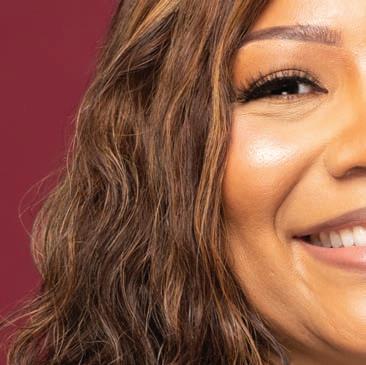


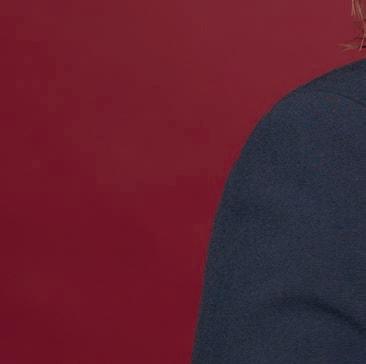


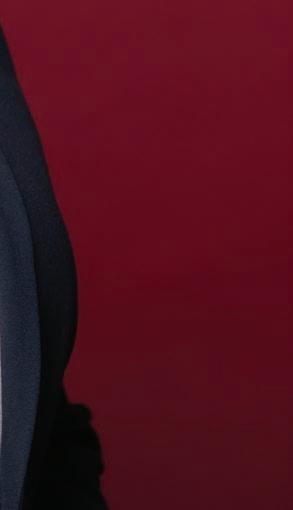
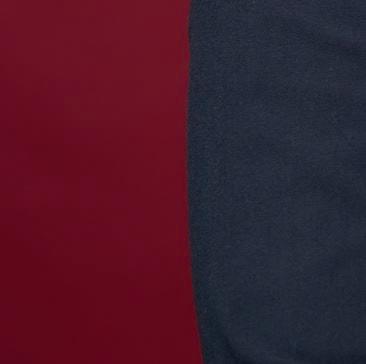
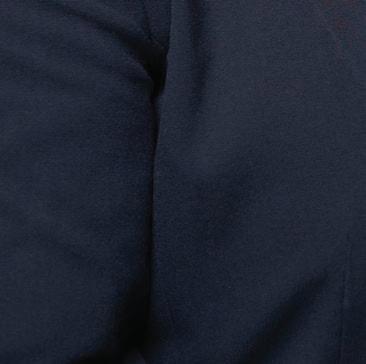




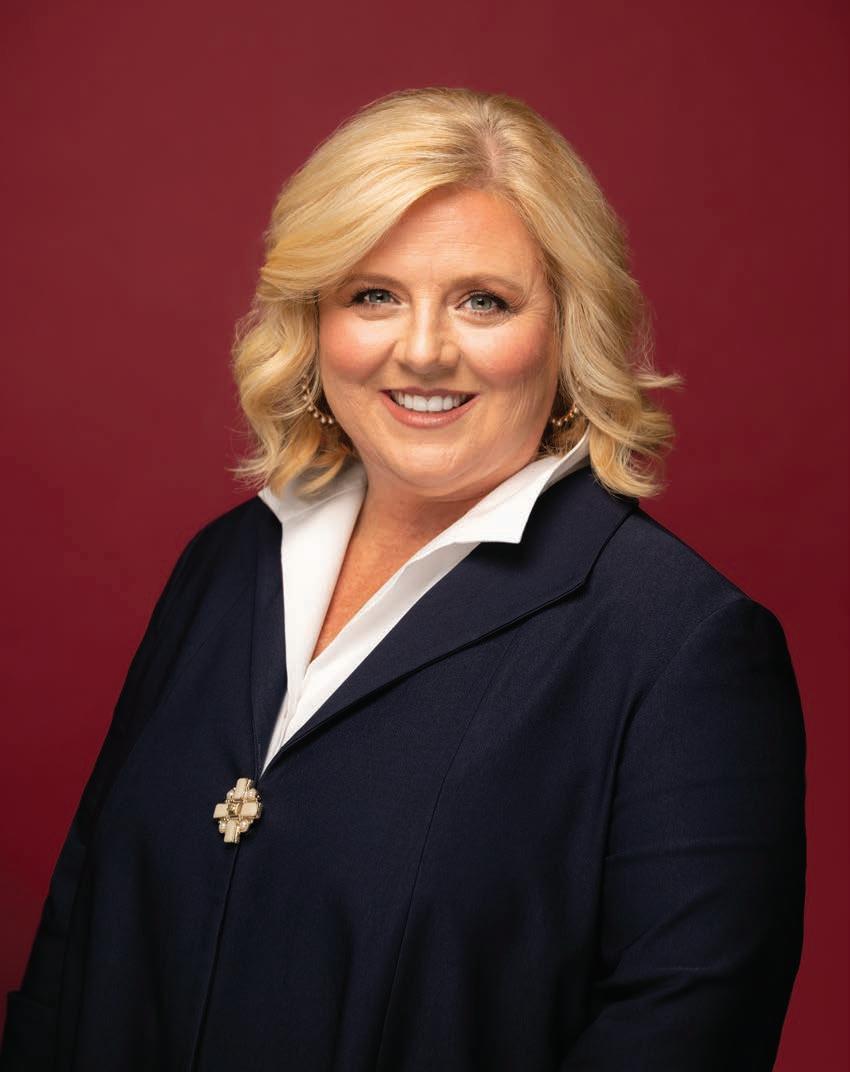
What is something you experienced as a more junior employee that informs how you treat the people who work for you?
During my first career job, the highest-ranking person in the city, the city manager, was a woman who was extremely supportive of me and always very kind. She treated me like I
had years of experience. In meetings with other city leaders, she showed me respect and always asked my opinion. I will never forget that feeling, and I try to treat others the same way, especially the entry-level team members. I also look for hidden talents among our team and push them to reach their potential. When someone has confidence in you, it can bring out something you didn’t even know you had.
What is a quality that a person must possess to be a good leader? Is that quality learned or intrinsic?
One quality that I think is critical to being a good leader is courage. It takes courage to take risks, get out of your comfort zone, speak the truth, take positions and own your
mistakes. Being courageous is a quality that is learned over time through experience.
When you were a kid, did you envision the type of career and lifestyle you have now? What did you want to be when you grew up?
I never imagined what an incredible career I would have while having the opportunity to promote such a vibrant city. I always thought I would be an entertainment lawyer. Life has almost come full circle with my job intersecting with the entertainment industry in almost every facet.
Think about the next generation of female leaders. What do you think will be easier for them than it was for you, and what do you think will be harder for them than it was for you?
My hope is that it will be easier for women to have a seat at the table. Every year I see a positive di erence in the number of female leaders emerging. If our organization is any indication, the future of female leaders is promising. Worklife balance continues to be a key issue for all companies. The topic has historically been considered a woman's issue, but finding that balance is now a sta -wide and cultural issue. All employees need and want the flexibility to manage their personal lives and are evaluating employment options with that perspective. While women may have historically paved the way for many work-life balance issues, we still have more to do on this front for everyone. What may be harder in the future is uncertainty. How and where we will work? How will we measure success? How will we retain talent in a shifting work environment? We first must invest in people, think more long term, make work more purposeful, invite young people into the conversation like I was all those years ago and give them more ownership over outcomes to retain talent in a competitive and shifting environment. Experts tell us to look at our leadership pipeline and build a culture our next generation wants to lead. That's our challenge to develop and promote more leadership-ready women and men.
What is something you experienced as a more junior employee that informs how you treat the people who work for you?
Early in my career, a senior leader at the organization advised me that I should not have children if I intended to excel professionally. I presume she meant no ill intent, but I didn’t agree with that sentiment, and it had no bearing on my desire to have a family. I intentionally and consistently try to demonstrate support for working parents and integrate family into what we do whenever possible.
What is a quality that a person must possess to be a good leader? Is that quality learned or intrinsic?
Courage. It’s essential to growth, to ownership, to leading through adversity. Courage is needed to do the hard things, and leadership regularly demands that. While I believe that people are born with di erent talents and dispositions, I think all leadership attributes can be developed and learned.
Who is someone you look up to outside of your field? Why?
I admire and like to learn from many people (within and outside of my field) — and I think it’s challenging and unfair to just name one person. But I can share some common traits that I admire in them: humility and integrity; great sense of humor; self-awareness; courage; independent thinkers; empathy; motivation to positively impact others.
Is there a common saying about business or leadership that you disagree with? Why?
I don’t agree with “work-life balance” — but please don’t misunderstand me! I strongly believe in self-care and taking time for what’s truly important. I believe in keeping things in
perspective. But to think that we can commit ourselves to any greater purpose or passion and believe that all things will be balanced seems unrealistic. Years ago, I heard someone replace “work-life balance” with “work-life integration,” and that resonated with me. I believe this can be done within appropriate boundaries with a little creativity and flexibility.
When you were a kid, did you envision the type of career and lifestyle you have now? What did you want to be when you grew up? I wanted to be so many di erent things — a teacher, lawyer, coach, therapist — the list goes on and on. Frankly, there are times in higher education/college athletics when I feel like I get to be all those things!
What is something you’ve changed your mind about compared to the beginning of your career?
Rest! It is essential and resting (and enjoying some solitude) doesn’t equate to laziness.
Think about the next generation of female leaders. What do you think will be easier for them than it was for you, and what do you think will be harder for them than it was for you?
I hope the next generation of female leaders will not have to contend with the scrutiny (and the burden of the shattered pieces) of the glass ceiling — because hopefully, those limitations will disappear. I hope they are “almost” able to take the notion that they belong for granted and are accepted in all spaces. Yet, a certain chip on your shoulder can develop from the constraints that we as women have to navigate as we fight to succeed. But given how stubborn the world can be sometimes, I imagine some of the nonsense will continue to persist for a while. I hope I’m wrong.
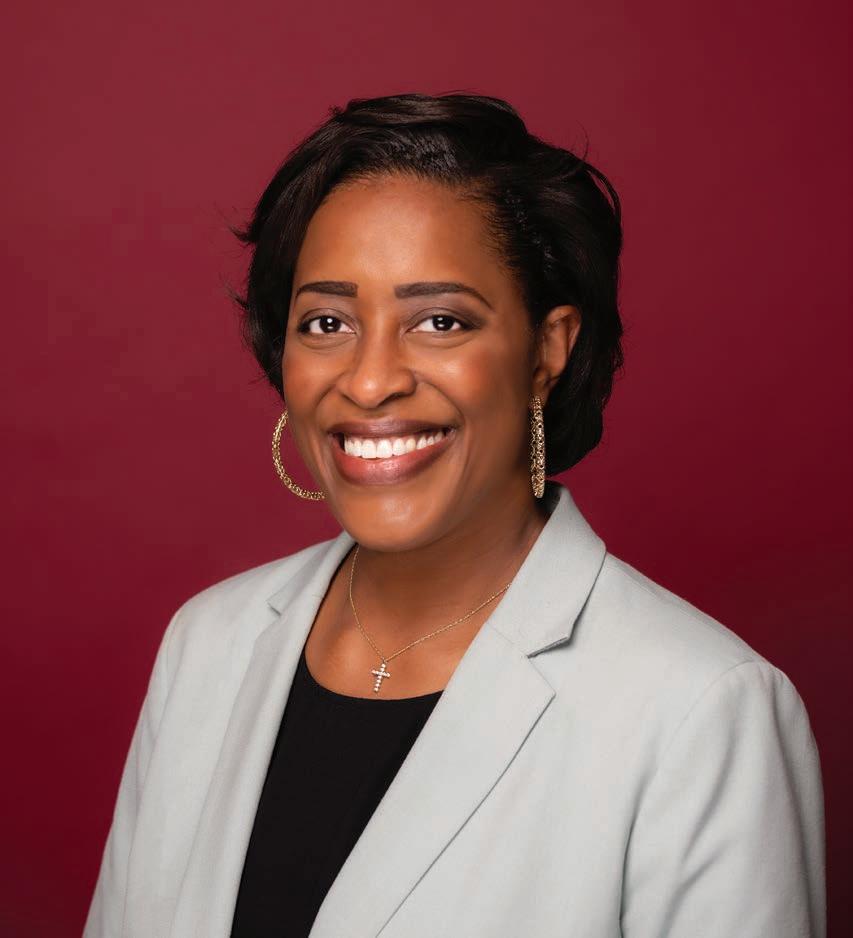

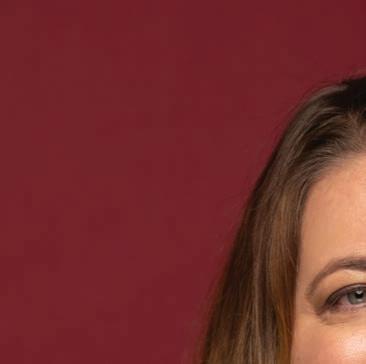
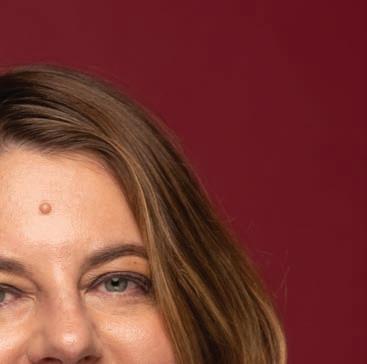

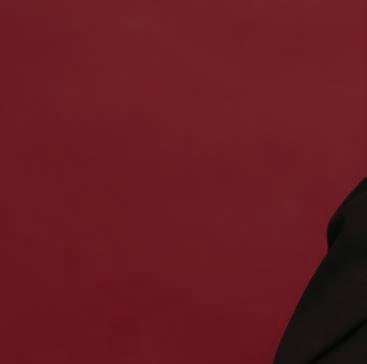
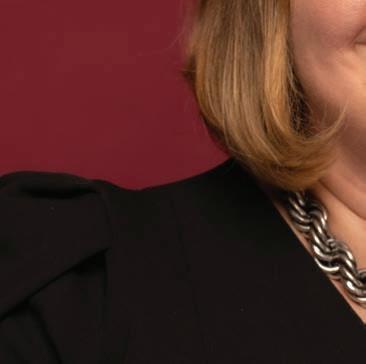



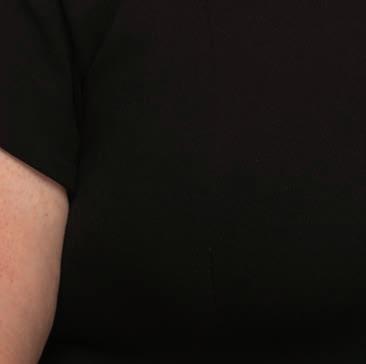
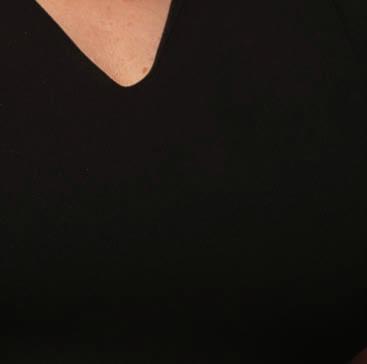
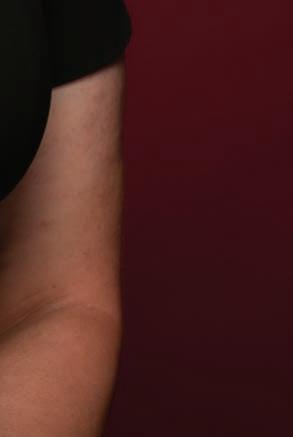






What is something you experienced as a more junior employee that informs how you treat the people who work for you?
My leadership style today has been curated by the many experiences I had as a junior employee; with two things that are incredibly important to me. Firstly, I strive to treat everyone that works at TPAC with respect and kindness. And secondly, I believe that a team member should bring their authentic self to work. I enjoy learning about the lives and passions of my colleagues — who they are as a person beyond their work at TPAC. I have worked for companies where leaders didn’t know my name or even my role in the organization, and at TPAC, I work to ensure everyone feels seen, heard and valued.
What is a quality that a person must possess to be a good leader? Is that quality learned or intrinsic?
By nature, I am a curious person that loves to find new ways of thinking and solving problems. So, when it comes to being a good leader, I would say that many of us possess intrinsic qualities, but anyone can develop strong leadership skills by building upon their strengths. If we are not constantly growing, evolving and learning, I don’t think we can be e ective leaders.
Who is someone you look up to outside of your field? Why?
A colleague once told me that you should have your own personal board of directors. People that will advise you and serve as a sounding board. I am grateful to have several people in my life that come from di erent fields and life experiences that I count on to tell me the truth, give advice or provide me with a new perspective.
Is there a common saying about business or leadership that you disagree with? Why?
There are so many! One that sticks out for me is the idea that you leave your personal life at the door and separate it from work. Especially since the pandemic, we are juggling many things between our work and personal lives, and sometimes that takes place in a hybrid environment with kids and pets popping on the computer screen. Our employees are managing so many things — child care, school, elder care, schedules on top of their job and so much more. We need to know our employees to understand their challenges and best support them. That distinction builds a motivated, productive and engaged team.
When you were a kid, did you envision the type of career and lifestyle you have now? What did you want to be when you grew up?
Not at all. I wanted to be an attorney and argue cases in front of the Supreme Court. When the first female justice was appointed in the early
‘80s, then it became possible for me to dream about being on the court. You cannot be what you cannot see — which is why representation is so important.
Think about the next generation of female leaders. What do you think will be easier for them than it was for you, and what do you think will be harder for them than it was for you?
It has gotten better. I was delighted to see a female board chair (Tracy Kane) when I joined TPAC as president and CEO. I am seeing more women in leadership positions in my field now than ever before.
I was recently with a large group of men and there was one other woman in the room. I asked a question that wasn’t answered directly, and the other woman spoke up to remind them that I had asked a question and suggested that the team start answering. I remembered that exchange more than anything else discussed at the meeting, and it is a reminder of how important it is to help elevate women’s voices. If you have the opportunity to support, you should.
What is something you’ve changed your mind about compared to the beginning of your career?
Earlier in my career, I used to raise my hand to take on extra responsibilities, sometimes even two or more jobs at once. I was hesitant to ask for compensation, thinking that the reward would come in a promotion down the road. As a result, I didn’t understand the value I was bringing to the company.
Today, I still believe in expanding one’s skillset in the workplace and taking on additional responsibilities to grow and develop professionally, but I am proud to understand the value I bring to an organization and how to communicate the work I have done to fulfill the mission and achieve our goals.
The women celebrated at this year’s event were preceded by 10 classes of exceptional honorees. Here’s who has helped us share lessons on leadership, growth and inspiring others in years past.
Sharon Hurt, Je erson Street United Merchants Partnership
Ellen Lehman, Community Foundation of Middle Tennessee
Jenneen Kaufman, Tennessee Titans
Linda Rebrovick, Consensus Point
Claire Tucker, CapStar Bank
2012
Megan Barry, Premier
Agenia Clark, Girl Scouts of Middle Tennessee
Aileen Katcher, Katcher Vaughn & Bailey
Dawn Rudolph, Saint Thomas Health
Jacky Akbari, Nashville Career Advancement Center
Sherry Stewart Deutschmann, LetterLogic
Stacey Garrett, Bone McAllester Norton
Janet Miller, Nashville Area Chamber of Commerce
Lisa Boggs, Bridgestone Americas
Glenda Glover, Tennessee State University
Heather Rowan, TriStar Centennial Medical Center
Sally Williams, Ryman Auditorium
Paula Lovell, Lovell Communications
Joelle Phillips, AT&T
Renata Soto, Conexión Américas
Christie Wilson, The Wilson Group Real Estate Services
Tammy Hawes, Virsys12
Beth Hoeg, Trinisys
Nicole Tremblett, HCA Healthcare
Rachel Werner, Built Technologies
Maneet Chauhan, Morph Hospitality
Jane MacLeod, Cheekwood
Mekesha Montgomery, Frost Brown Todd
Sharon Roberson, YWCA Nashville & Middle Tennessee
Carol Yochem, First Horizon Bank
Jane Allen, Nashville Entrepreneur Center
Mignon Francois, The Cupcake Collection
Shanna Jackson, Nashville State Community College
Becca Stevens, Thistle Farms
Kate Burke, AllianceBernstein
Cordia Harrington, Crown Bakeries
Dee Patel, The Hermitage Hotel
Tina Tuggle, Tennessee Titans

Shubhada Jagasia, Ascension Saint Thomas Hospital
Zulfat Suara, Metro Council At-Large
Nancy Keil, Second Harvest Food Bank of Middle Tennessee
Sarah Trahern, Country Music Association
BREAKING BUSINESS NEWS DELIVERED DIRECTLY TO YOUR INBOX
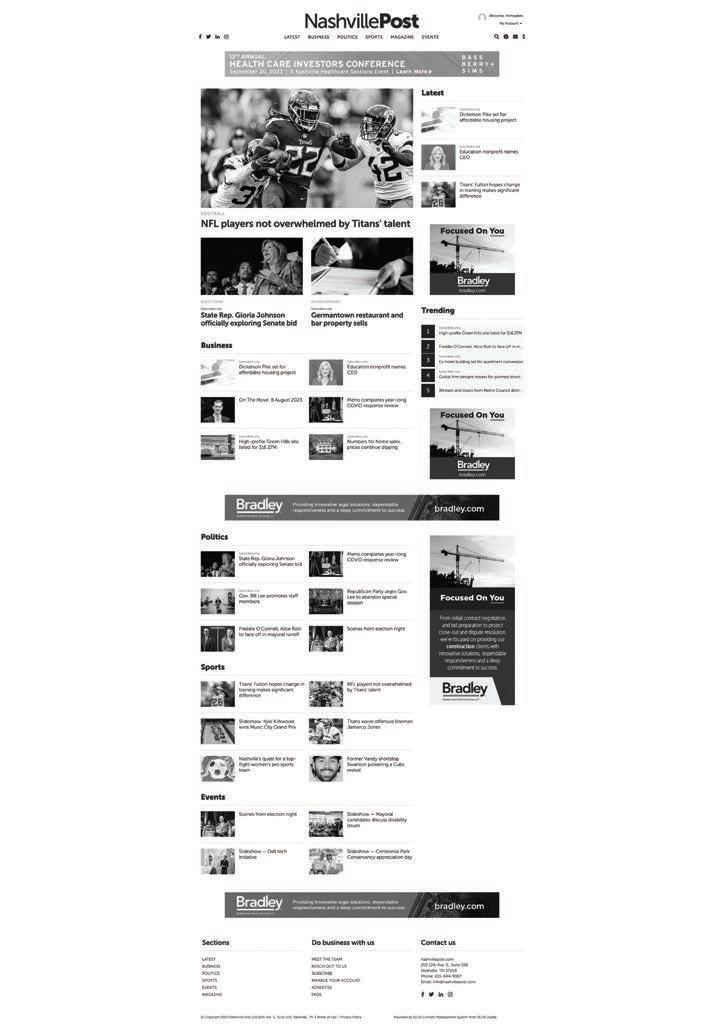
SUBSCRIBER ONLY CONTENT
EXCLUSIVE ACCESS TO NASHVILLE POST MAGAZINES
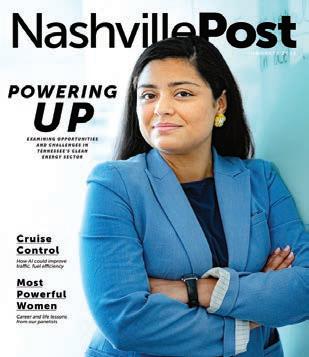
EXCLUSIVE ACCESS TO NASHVILLE POST EVENTS
TO SIGN UP FOR A 30-DAY FREE SUBSCRIPTION, PLEASE EMAIL GMINNIS@FWPUBLISHING.COM OR SCAN THE QR CODE TO SUBSCRIBE.
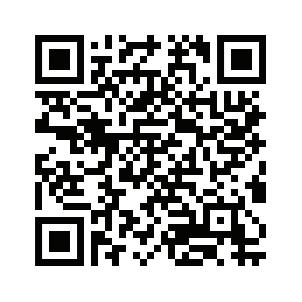
For the 19th year, our sister publication Nfocus has identified the philanthropists, volunteers and board members who help make sure the city's nonprofits continue to thrive. Local organizations annually nominate their most dedicated supporters, and Nfocus chooses 10 to spotlight. To learn more about the 2023 honorees, pick up the September issue of Nfocus or visit nfocusmagazine.com.



 Anne L. Russell Cheekwood Estate & Gardens
Christie Wilson Nashville Wine Auction
Josephine VanDevender Ward OZ Arts Nashville
PHOTOS BY TAUSHA DICKINSON
Kyshona Armstrong Centennial Park Conservancy
Anne L. Russell Cheekwood Estate & Gardens
Christie Wilson Nashville Wine Auction
Josephine VanDevender Ward OZ Arts Nashville
PHOTOS BY TAUSHA DICKINSON
Kyshona Armstrong Centennial Park Conservancy

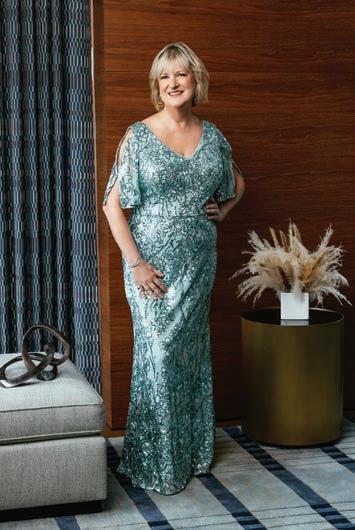
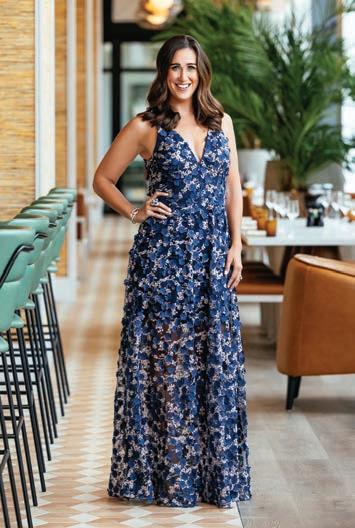

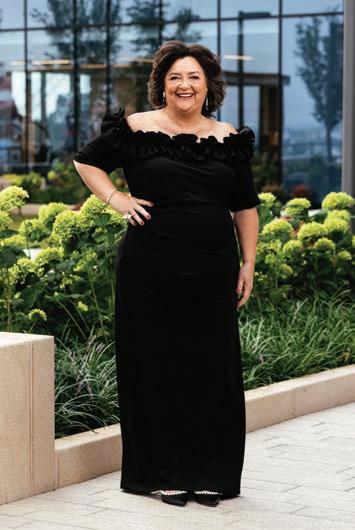
 Connie Deidiker Nashville Repertory Theatre
Janet M. Miller Nashville Entrepreneur Center
Johari Matthews Tennessee Titans Foundation
Ryan McLaughlin Wood Goodwill
Sondra Morris Heritage Foundation of Williamson County
Connie Deidiker Nashville Repertory Theatre
Janet M. Miller Nashville Entrepreneur Center
Johari Matthews Tennessee Titans Foundation
Ryan McLaughlin Wood Goodwill
Sondra Morris Heritage Foundation of Williamson County
s a former NFL player, Jonathan Woodard is used to making a pivot, with his body or from one team to another.
In 2022 he made the ultimate pivot away from the sport and into a career in tech.
The Nashville-area native and Ravenwood High School alumnus went on to play football at the University of Central Arkansas, where he got his bachelor’s degree in health care administration. He assumed that health care would be his field of choice when his football career was over.
“There were a lot of ups and downs along the way,” Woodard says of his NFL career.
A defensive end, Woodard was originally drafted in 2016 by the Jacksonville Jaguars before tearing his Achilles tendon. While rehabilitating, he finished his master’s degree in health administration. He was released in 2017 from the Jaguars, only to be picked up and released again by the Atlanta Falcons. Before 2017 was up, he was signed by the Miami Dolphins. Woodard su ered a back injury and missed the 2019 season and later had stints with the Bu alo Bills, the Canadian Football League’s Saskatchewan Roughriders and the Kansas City Chiefs.
His 2022 release from the Chiefs was the tipping point, he says.
“That was one of the catalysts that made me start thinking — how much longer do I really want to keep playing?” Woodard says. “I’d already started my interest in programming, but
after being released by the Chiefs I thought it would be a good idea to take my interest in programming to the next level.”
Woodard received his training from the Nashville Software School, and a few months into the six-month web developer certificate program, he made the choice to retire from football.
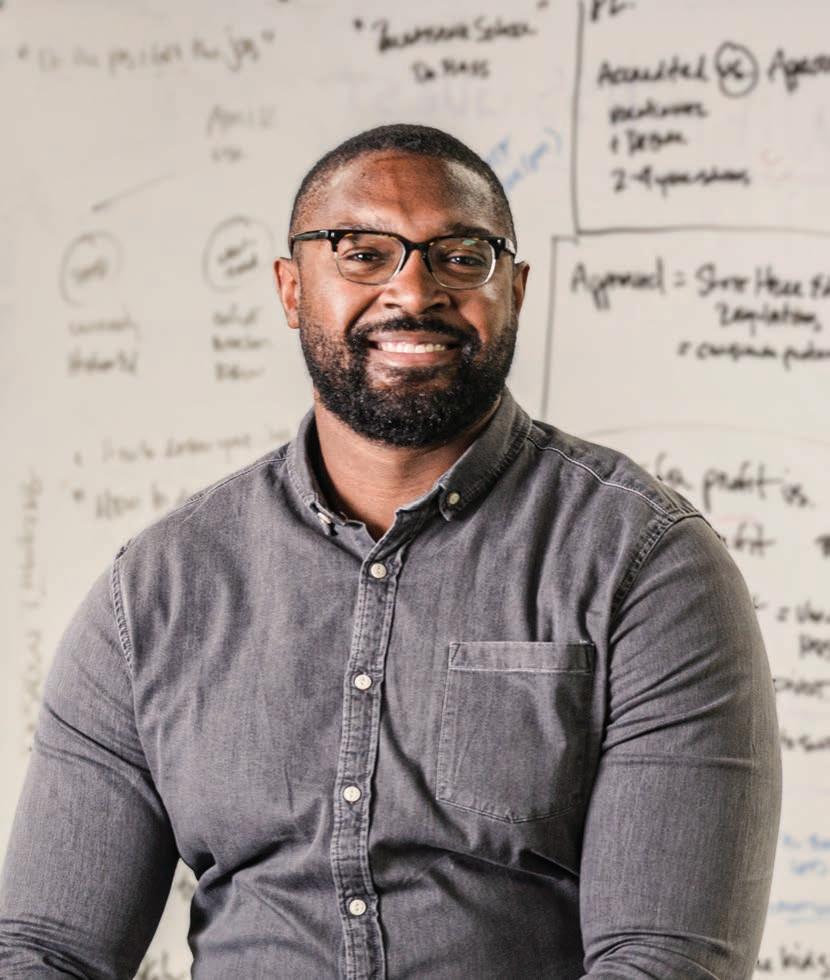
“I definitely spent a lot of time thinking about what I wanted to do after football. I’ve always loved the game, but I think there was always a part of me that was also yearning, anxious to just know what was going to be next for me because I knew that playing is not going to last forever,” he says. “I think that was always something that was in the back of my mind, and as the years went on, it started to come to the forefront.”
Nashville Software School o ers day and evening classes to fit the schedules of nontra-
ditional students. Woodard hopes to see more of his NFL peers get into tech after their playing careers end.
“I honestly hope that it does become a trend,” he says. “I think there are a lot of players who would enjoy the type of work that I’m doing, and who would be able to do well at it.”
As a part of an apprentice program at Airbnb, Woodard is on his way to his first full-time career outside of football. It was a tough thing to walk away from, but he still gets a thrill from his new field.
“The way I view it is programming is solving a complex problem and [that] brings a similar feeling that making a big play does in football,” he says. “The first time I really got to experience that it really got me excited. It lit the light bulb. … This is something I feel like I’m really going to be passionate about and I can do for a long time.”
